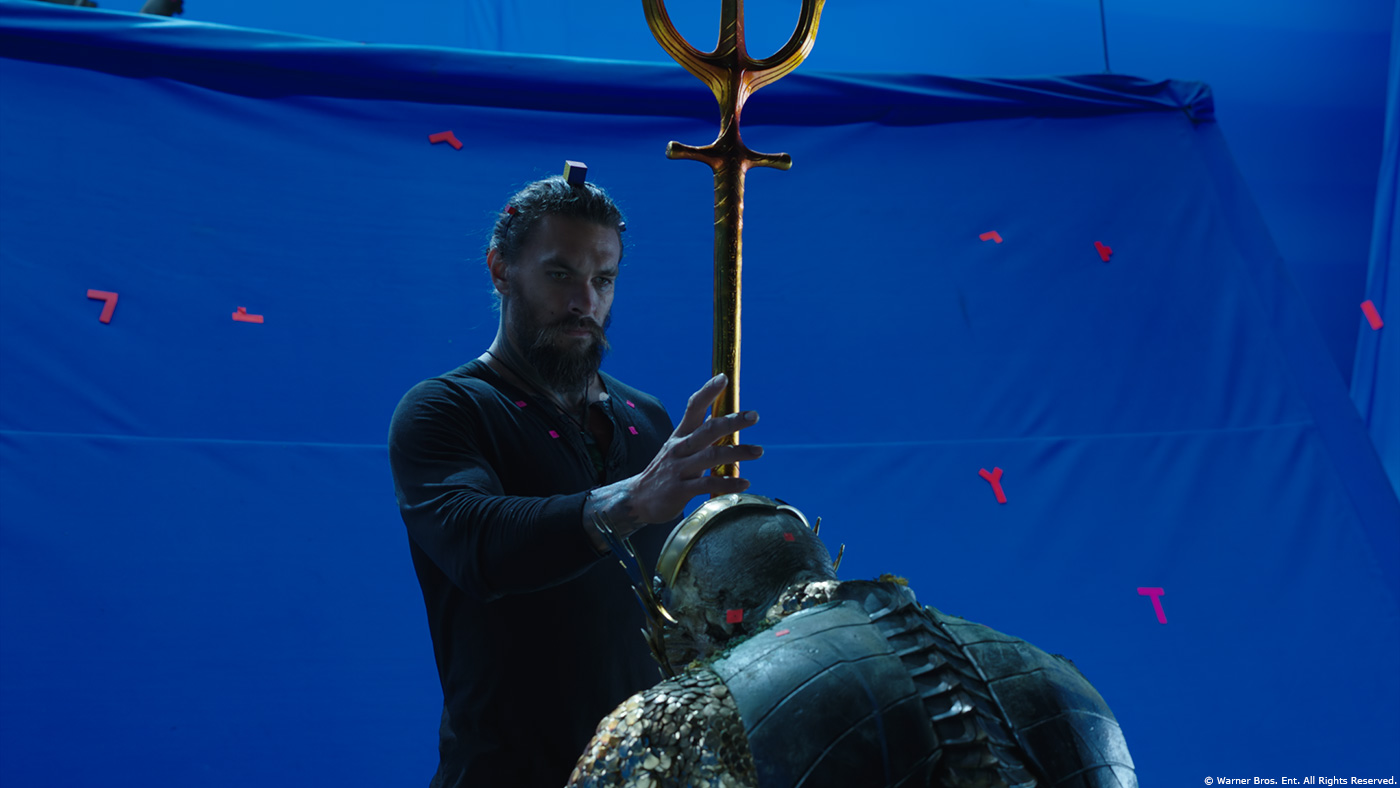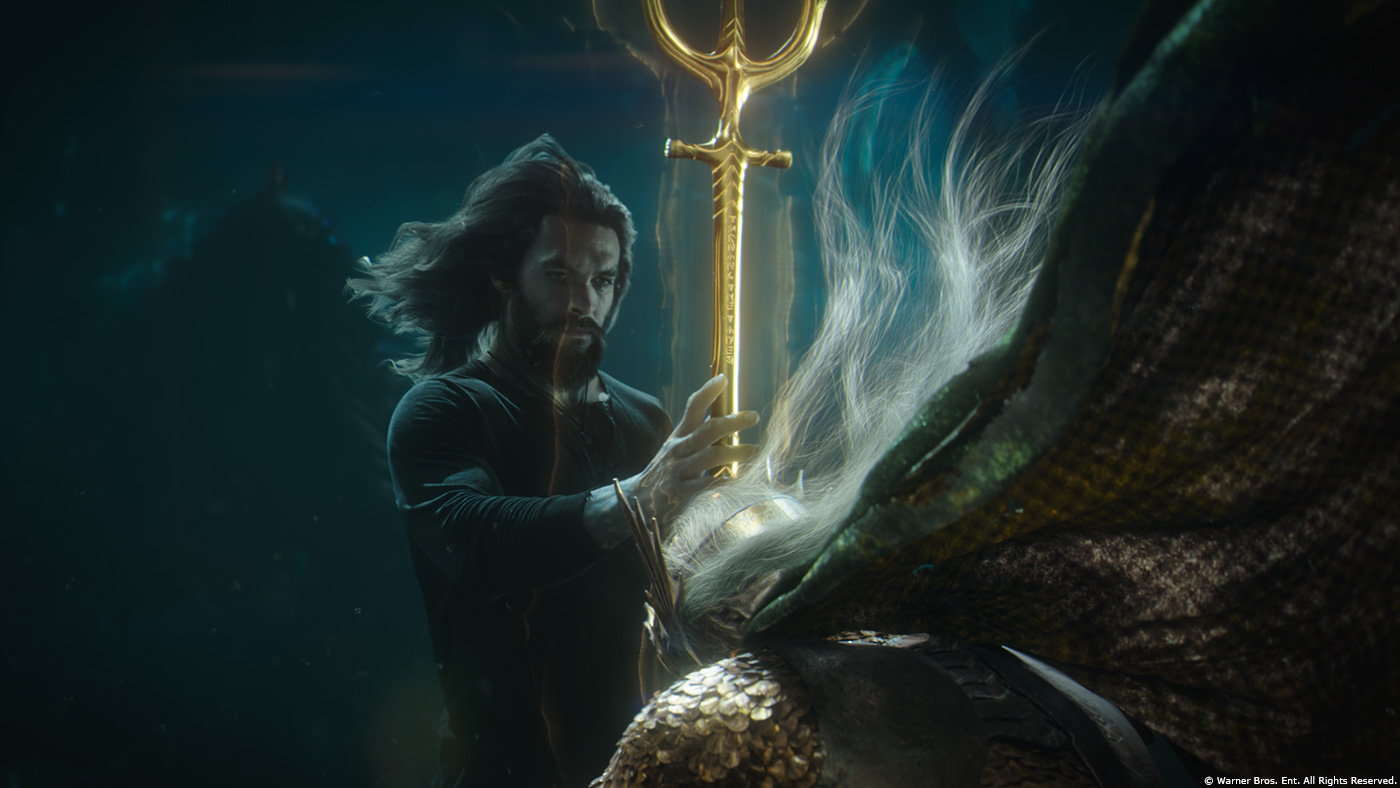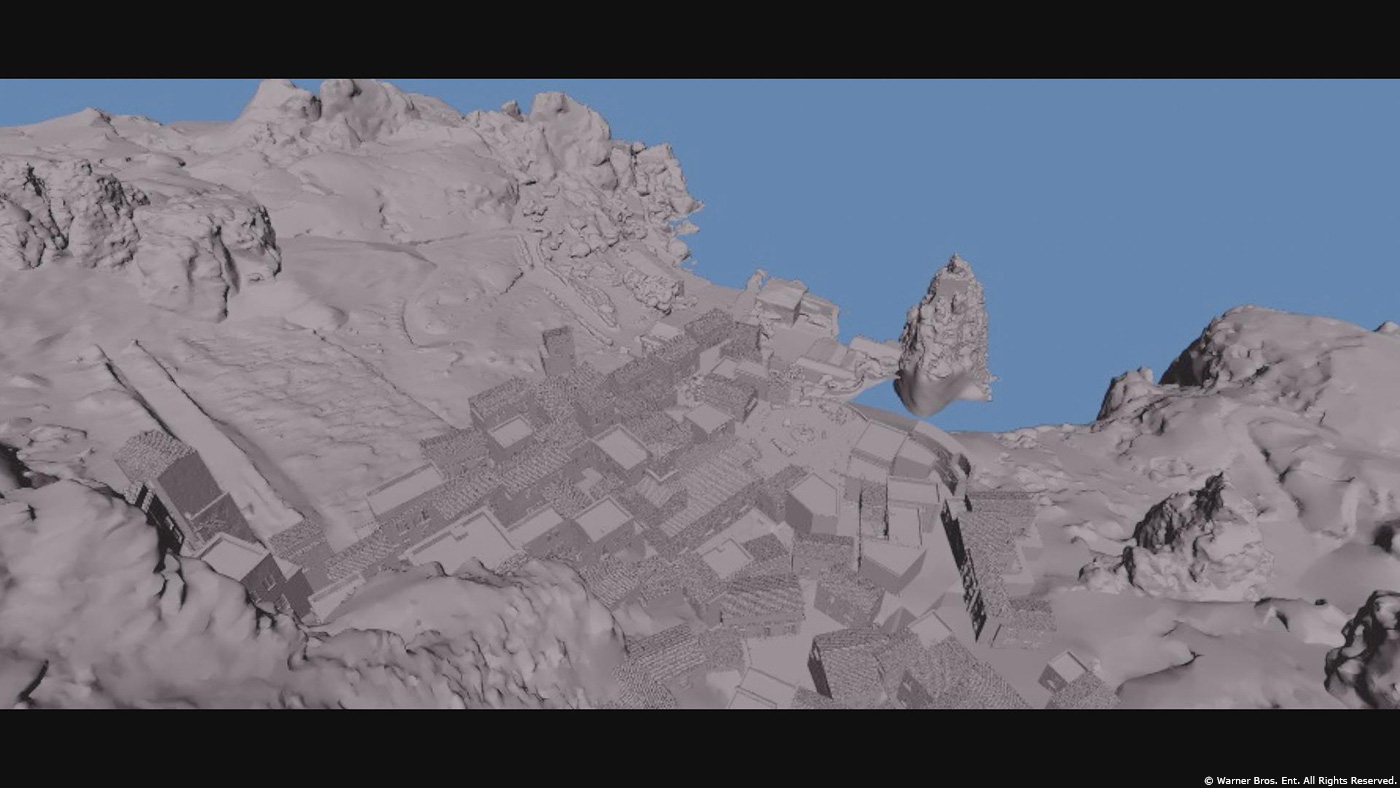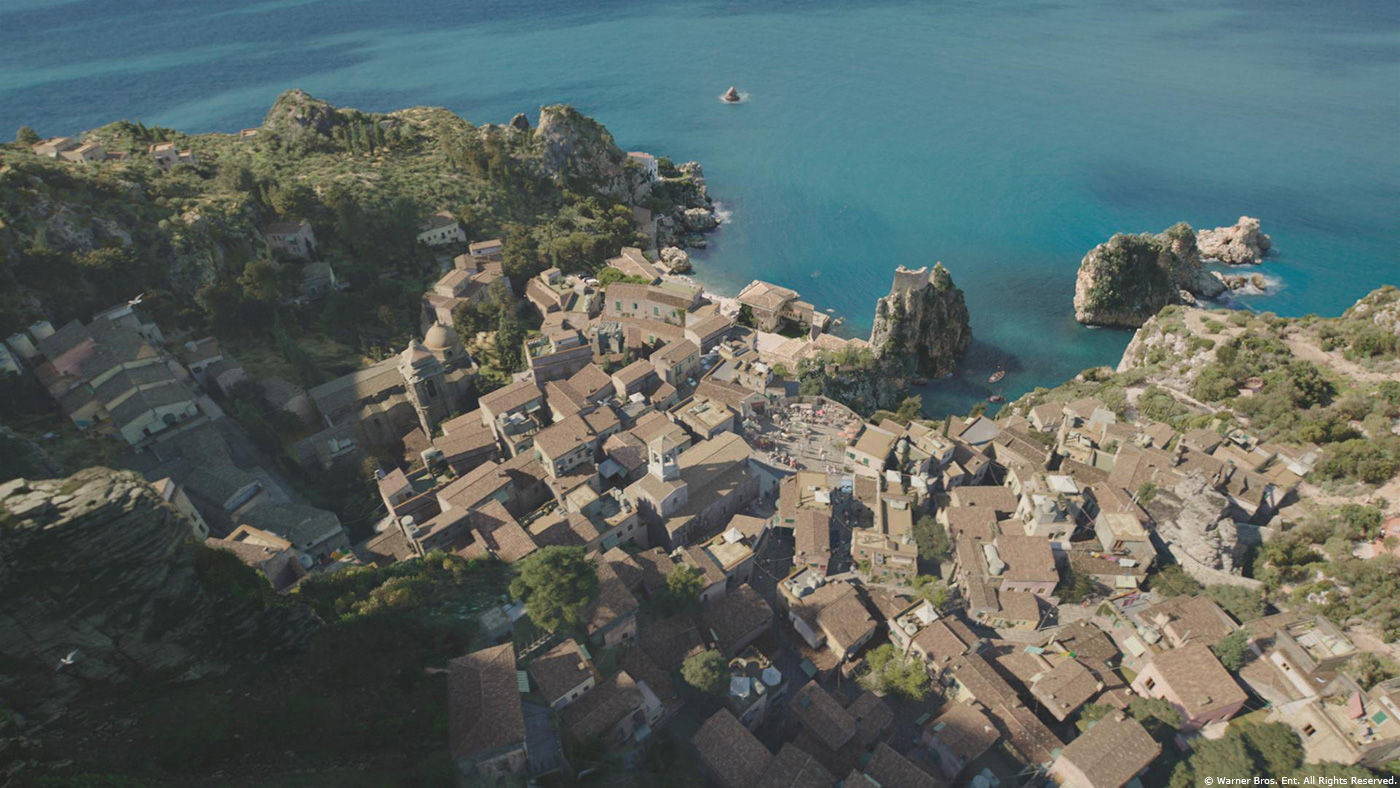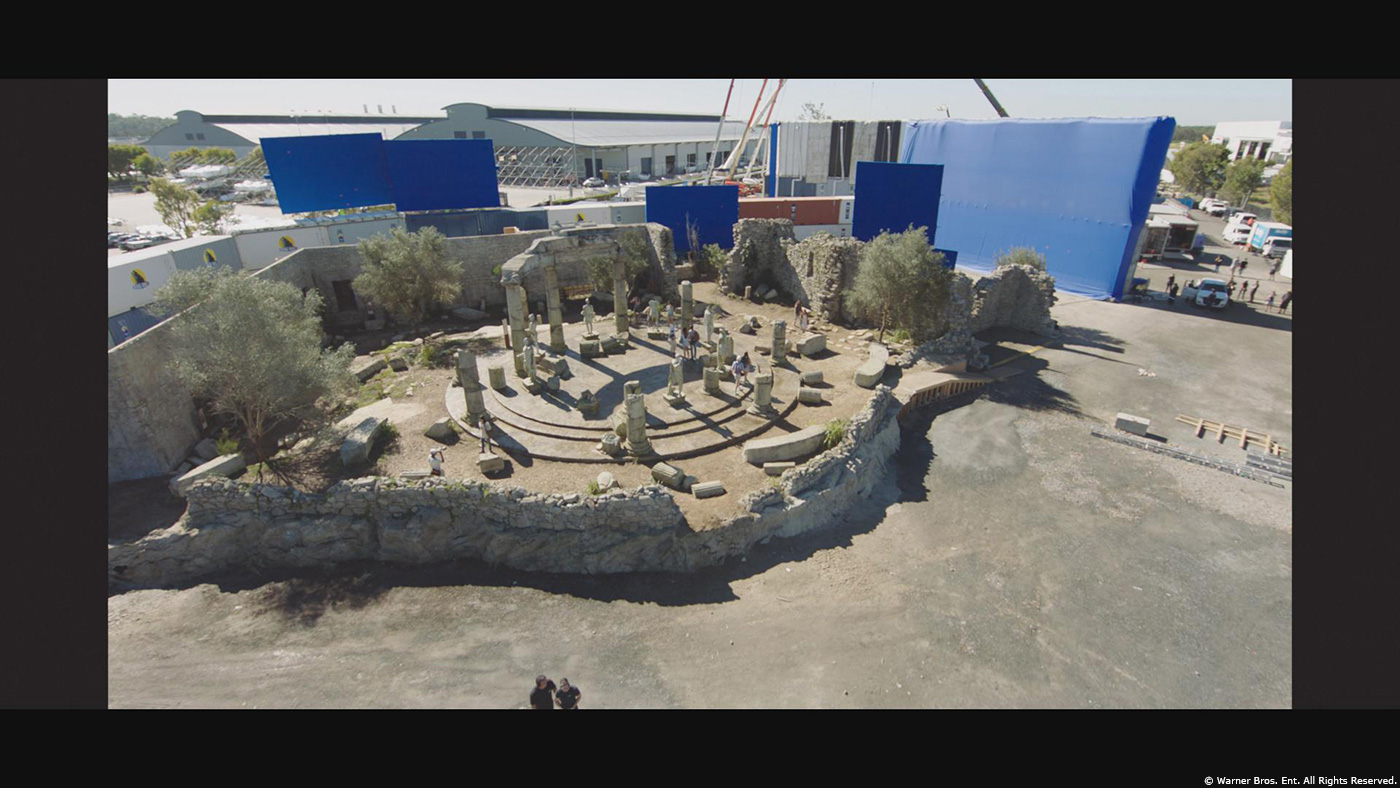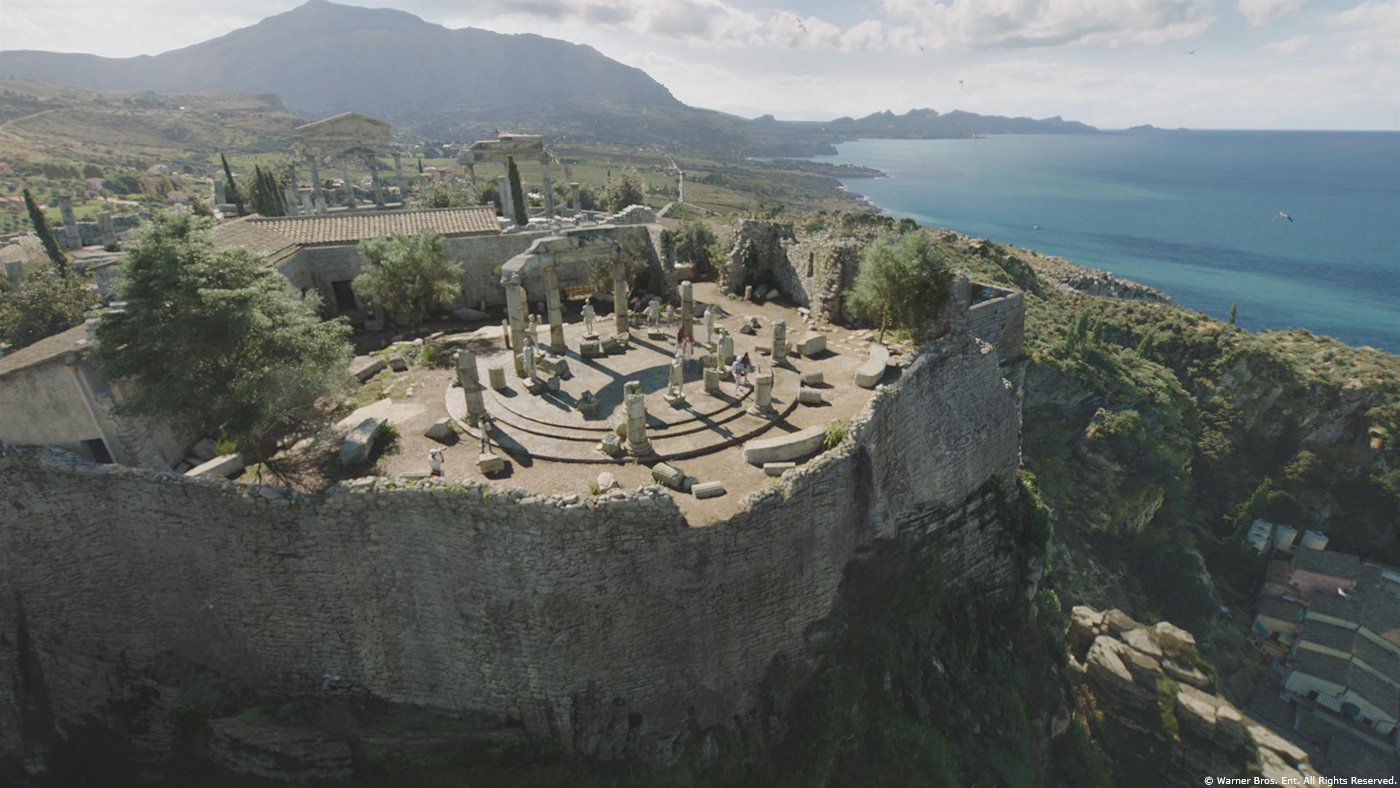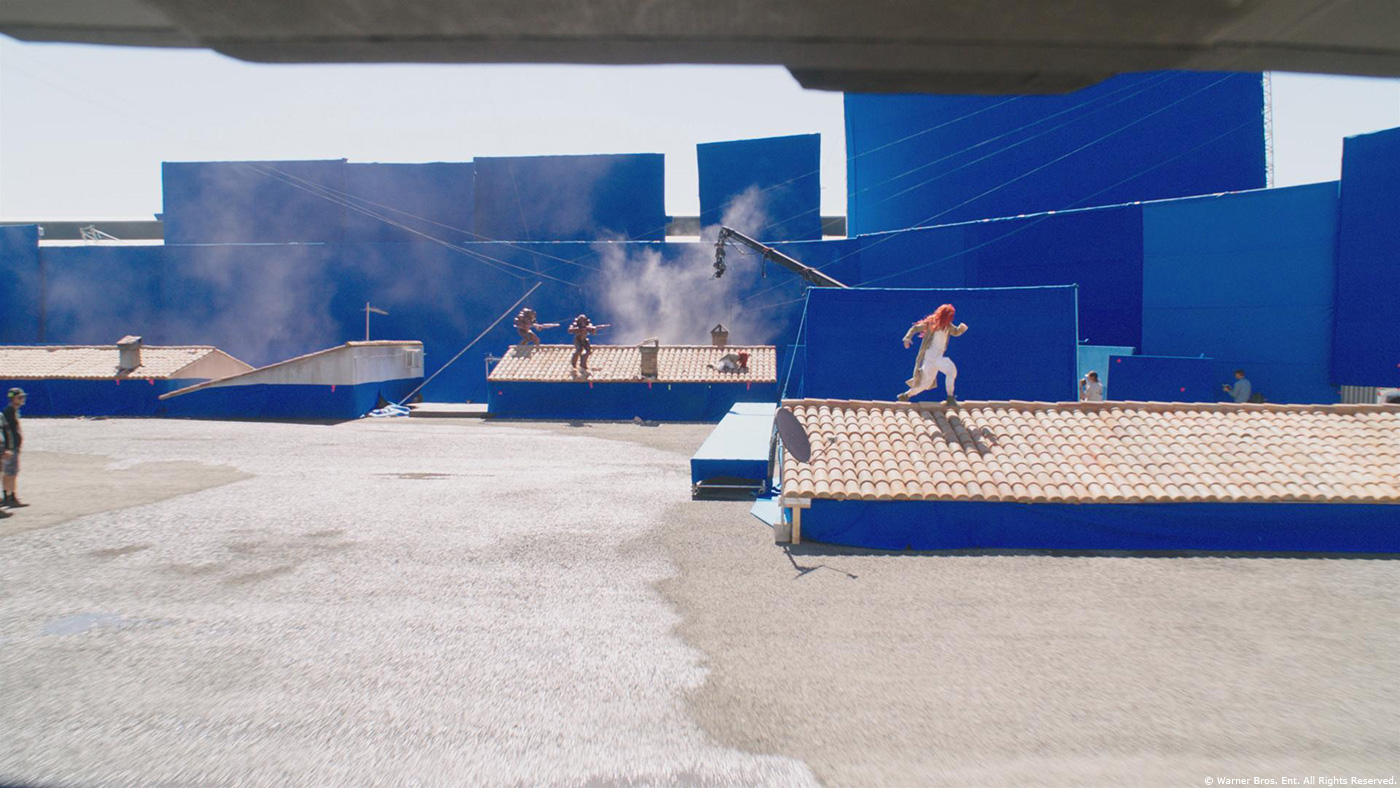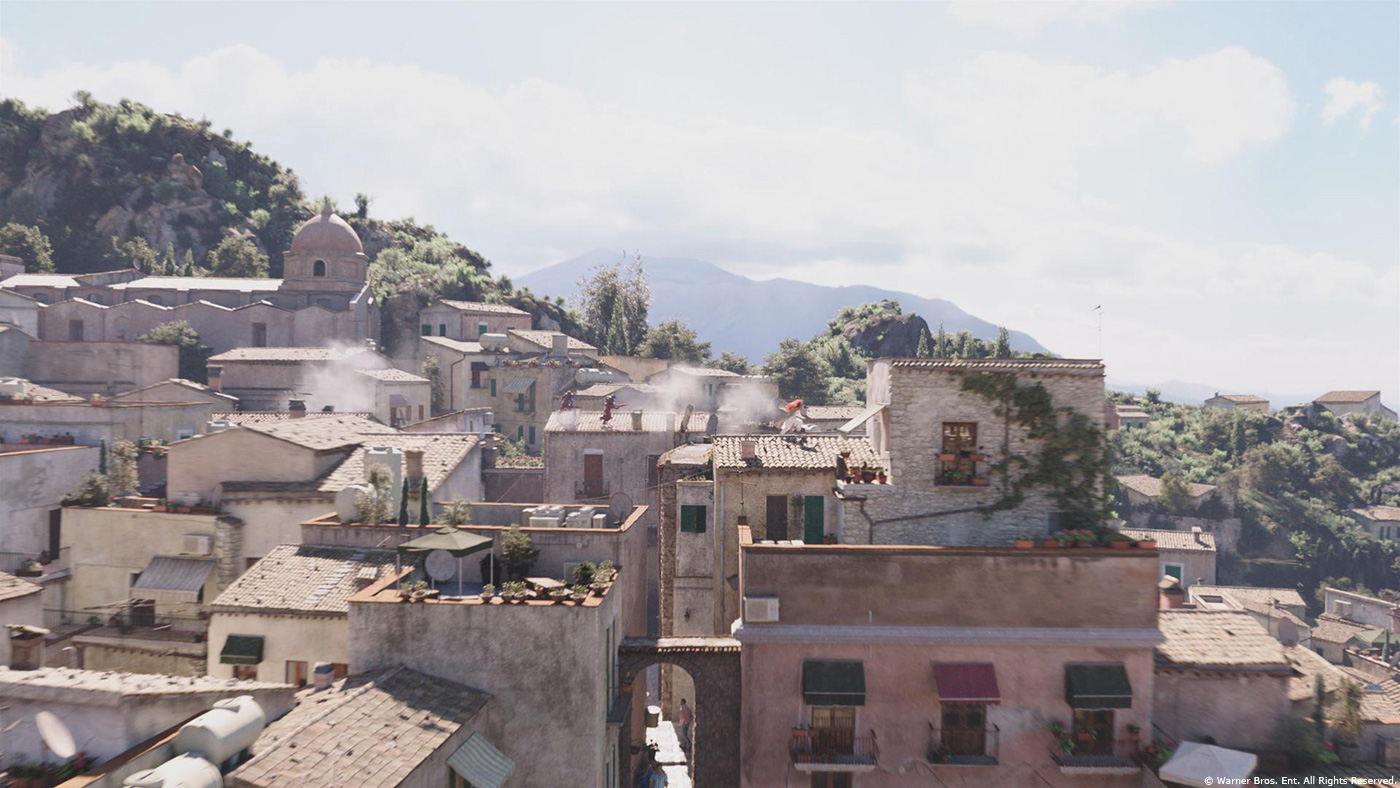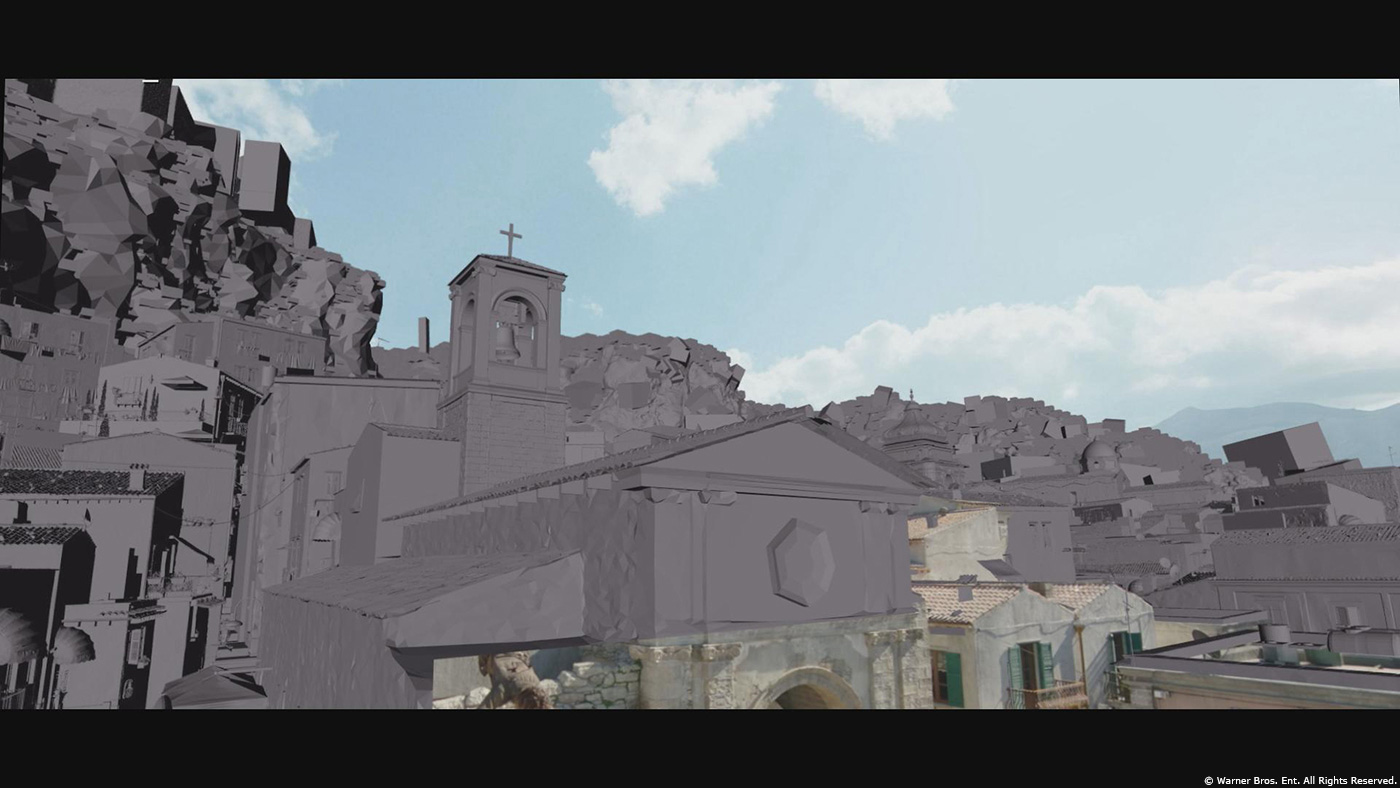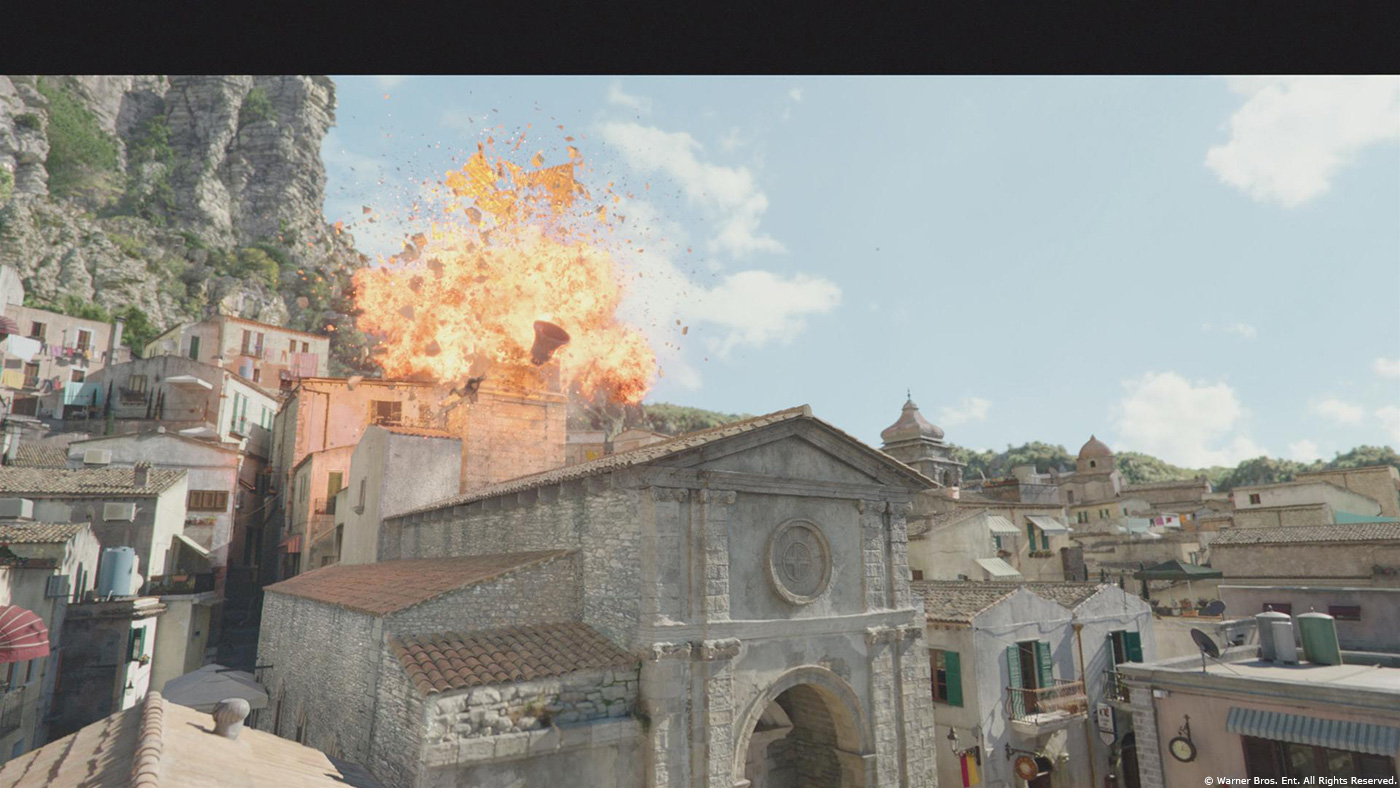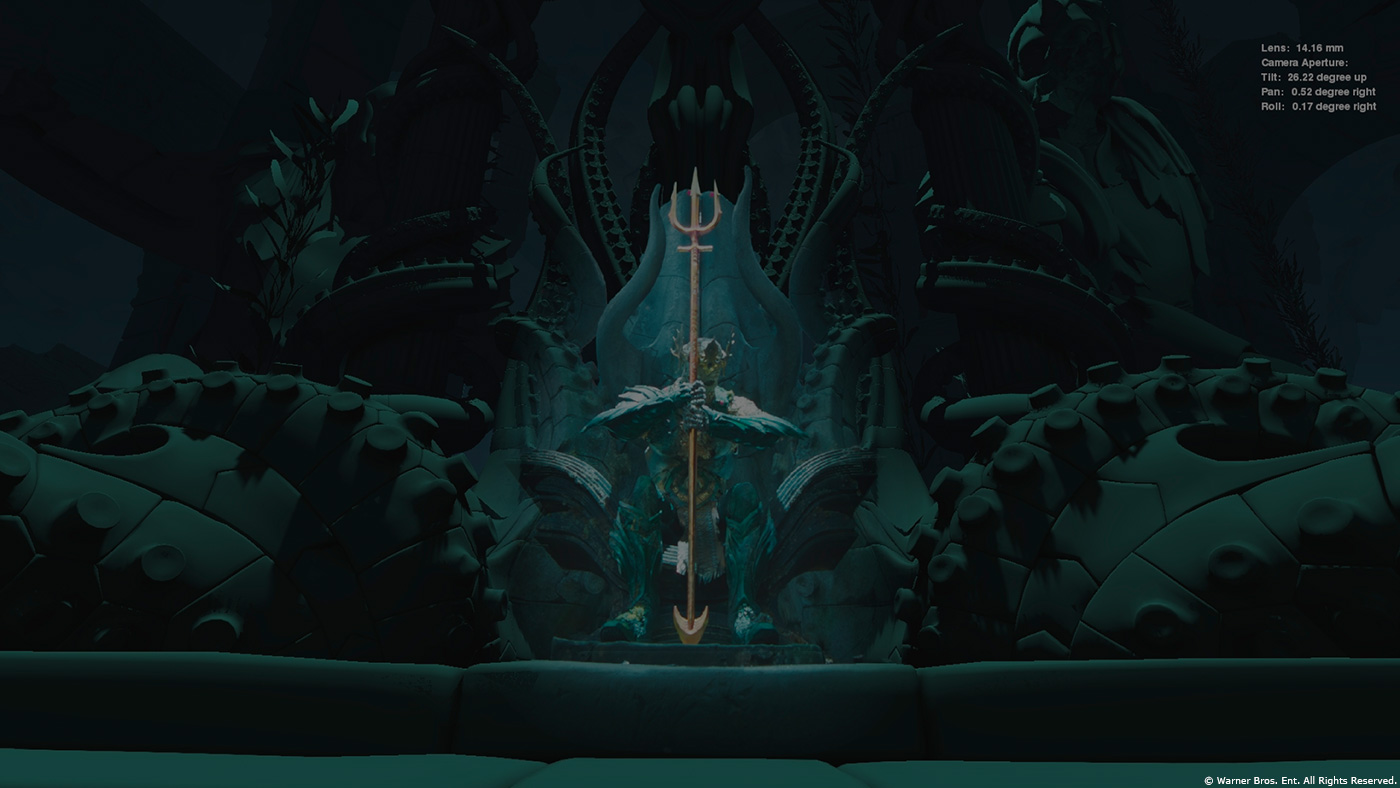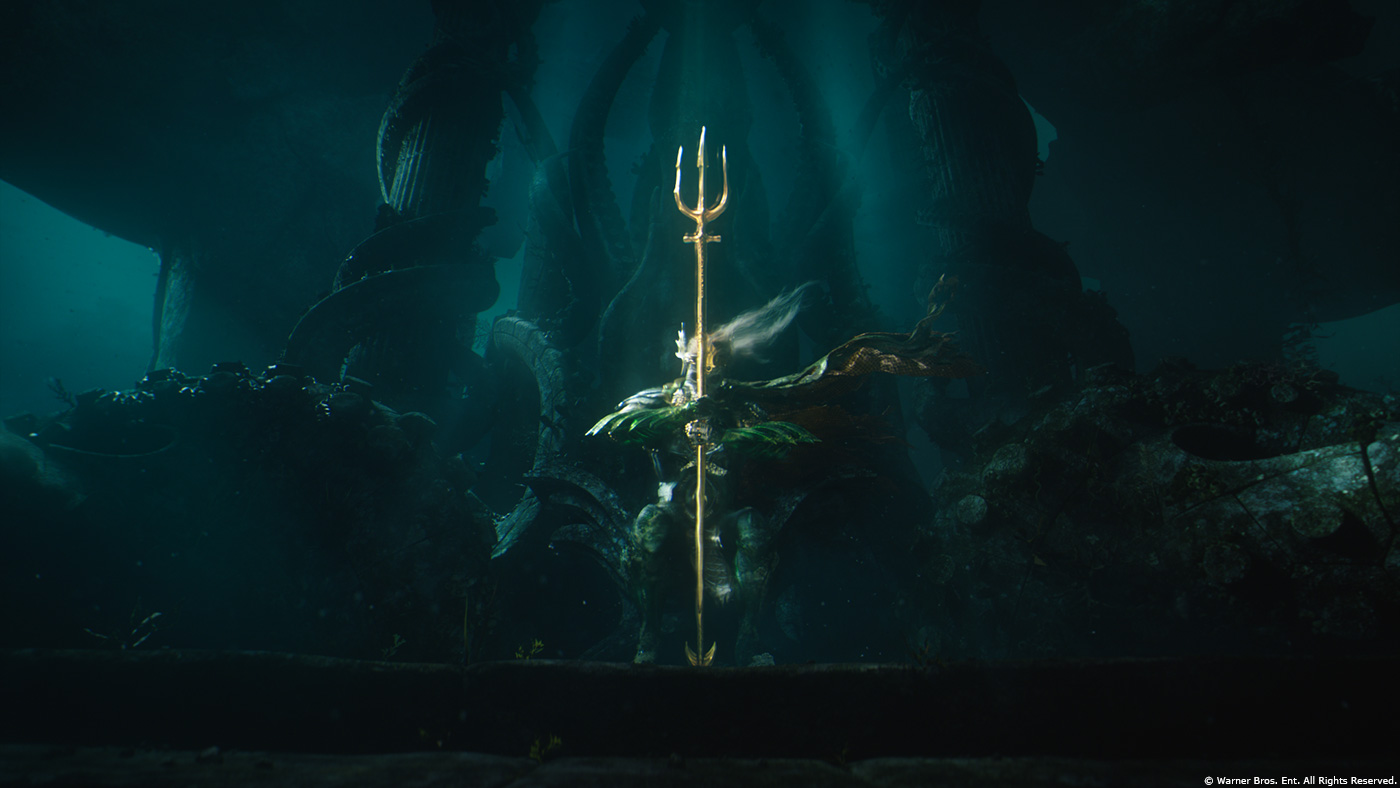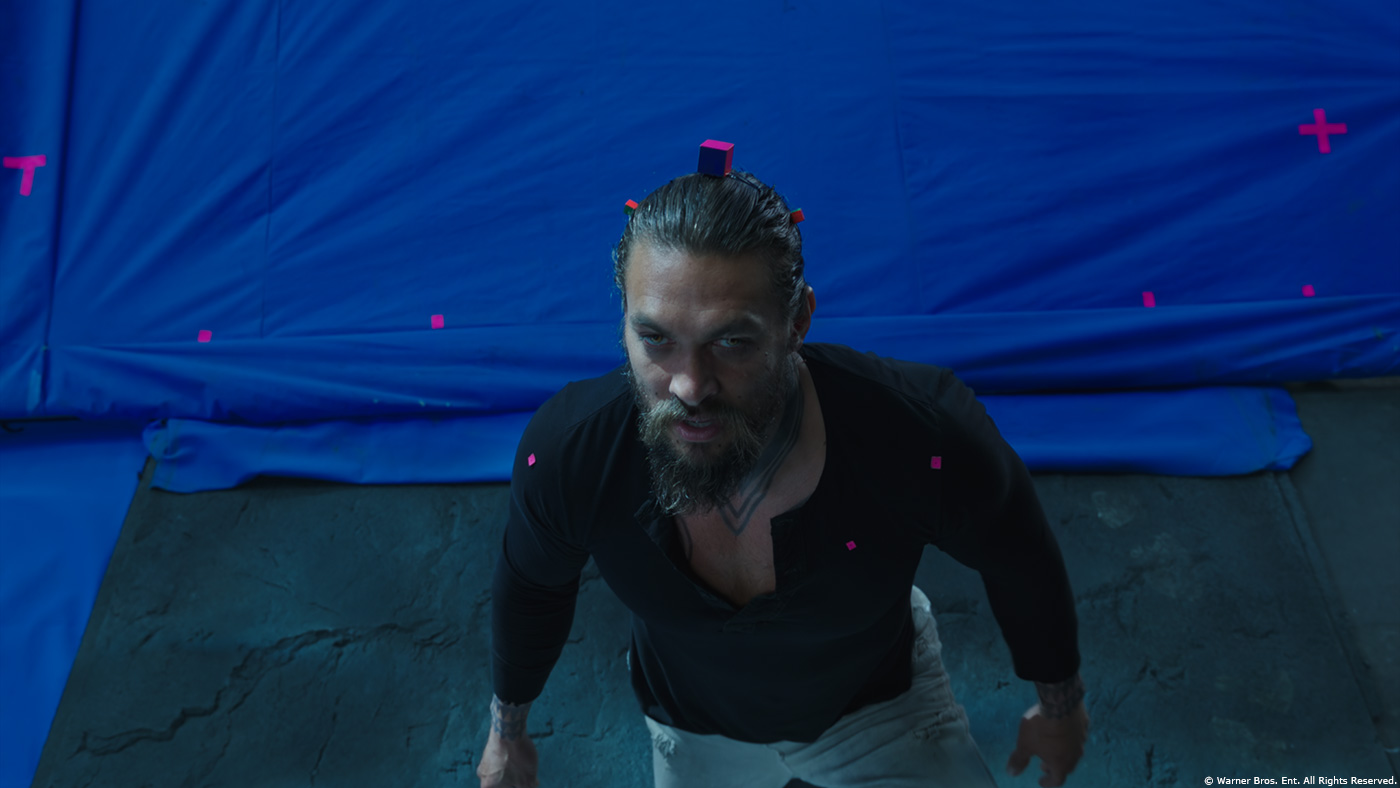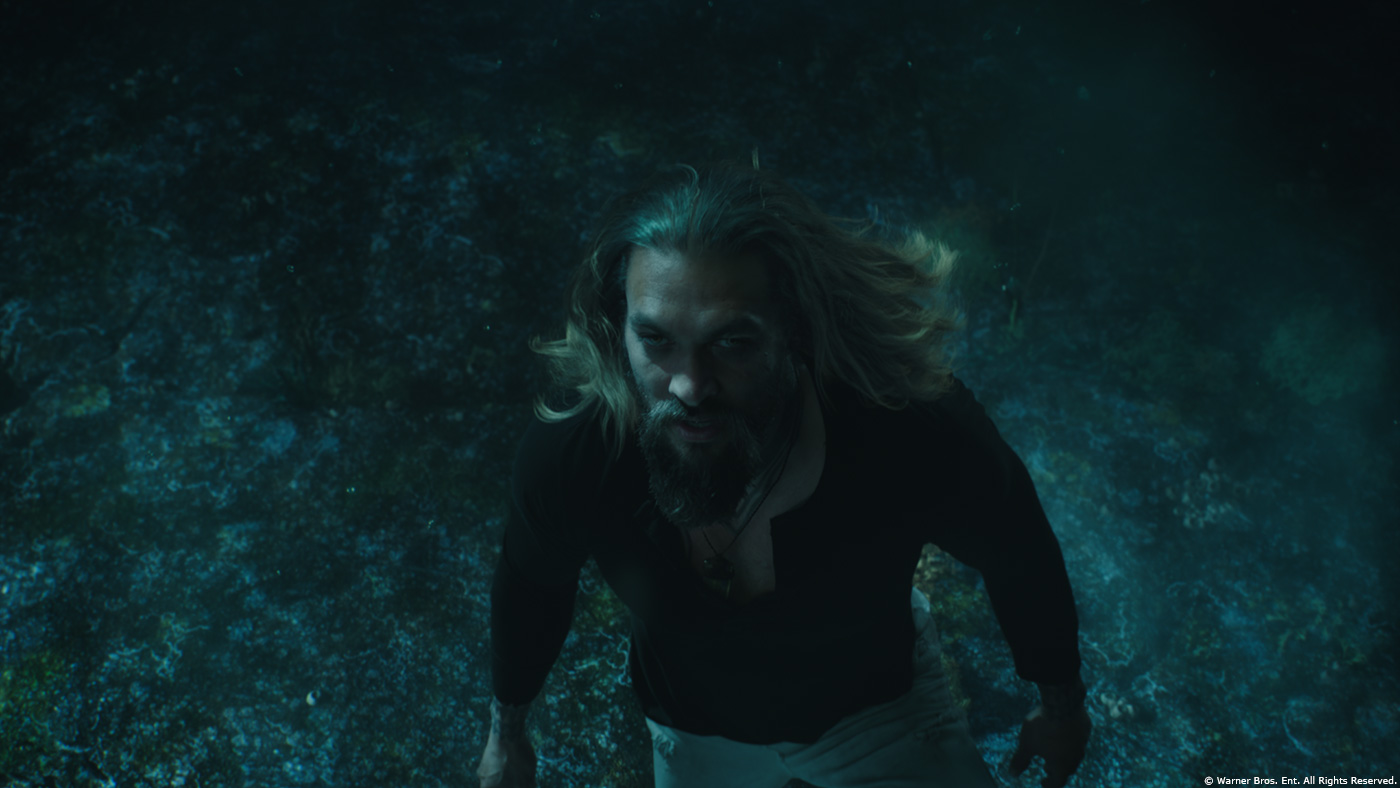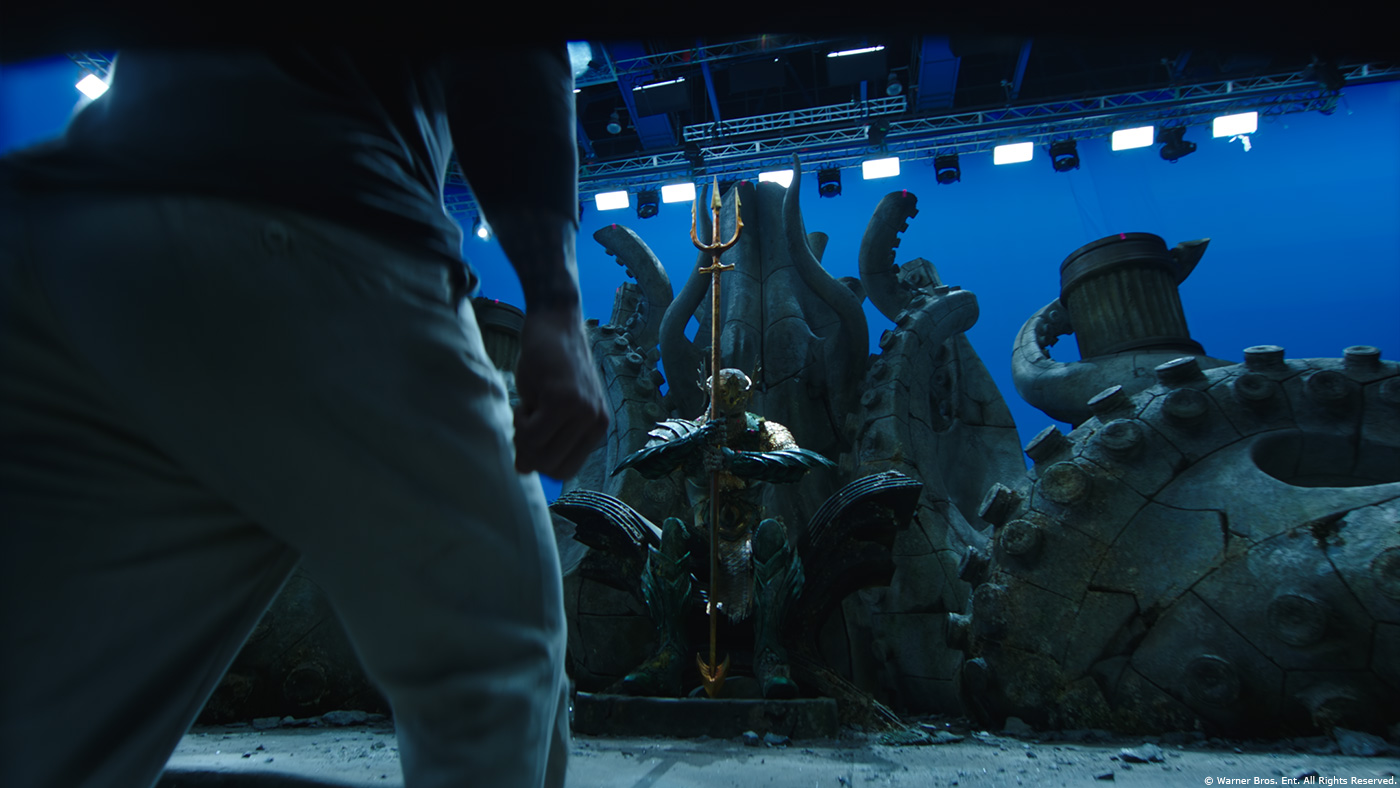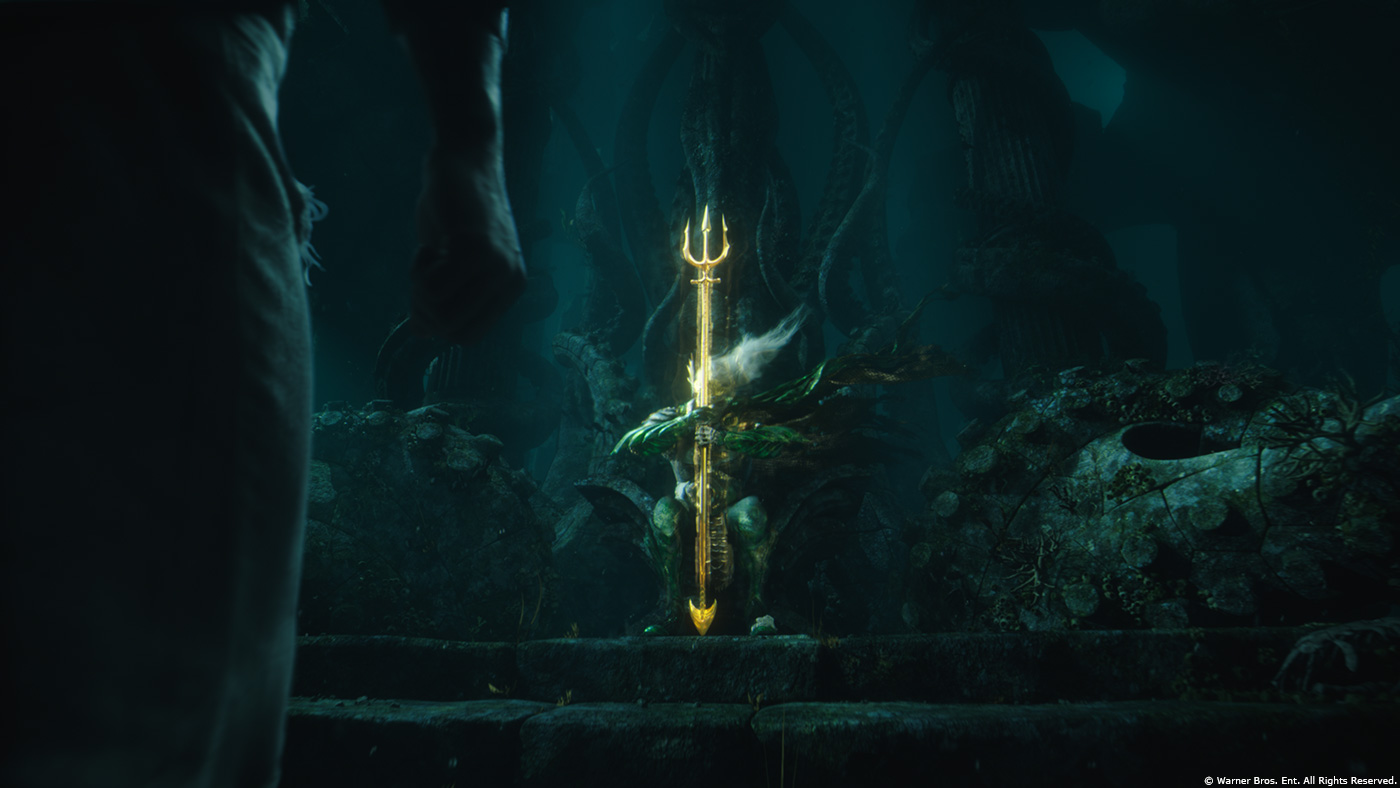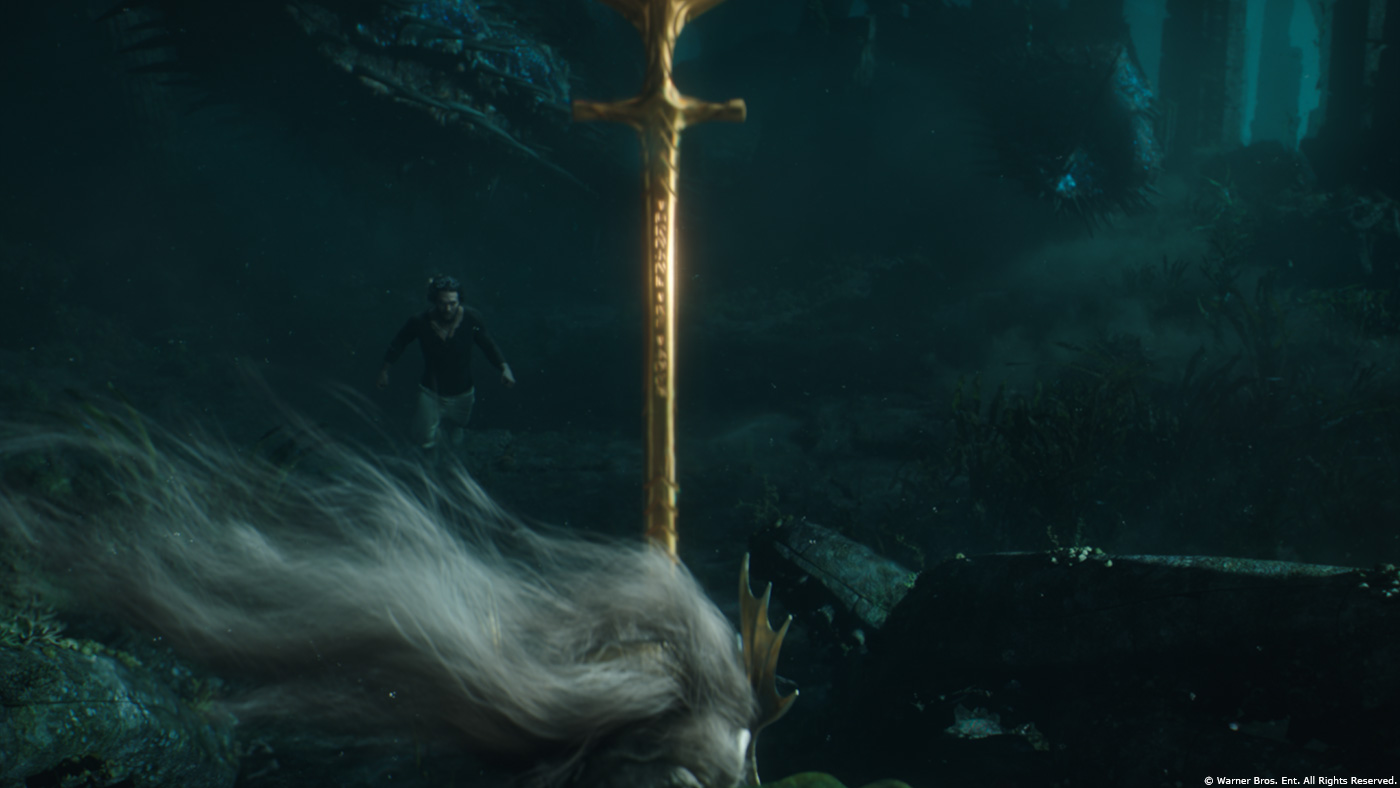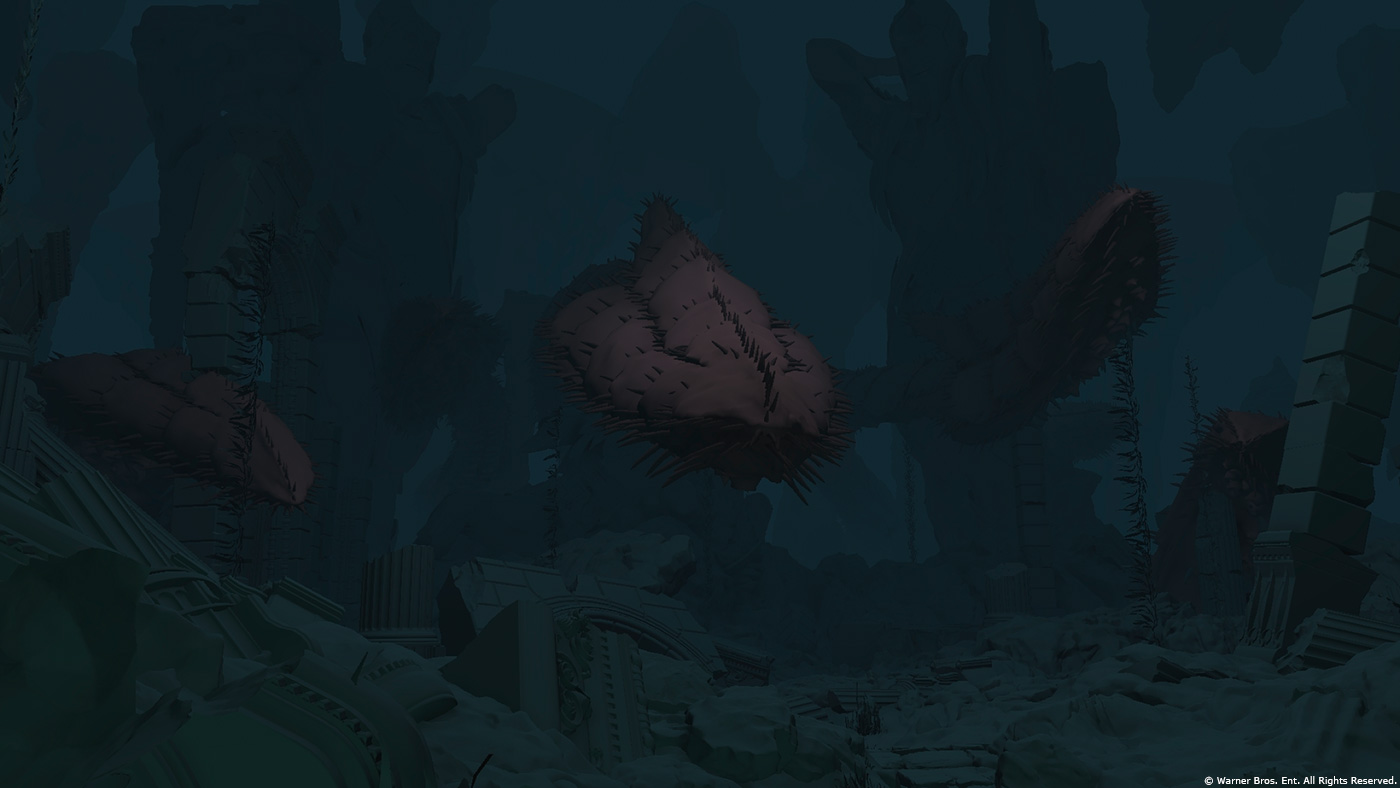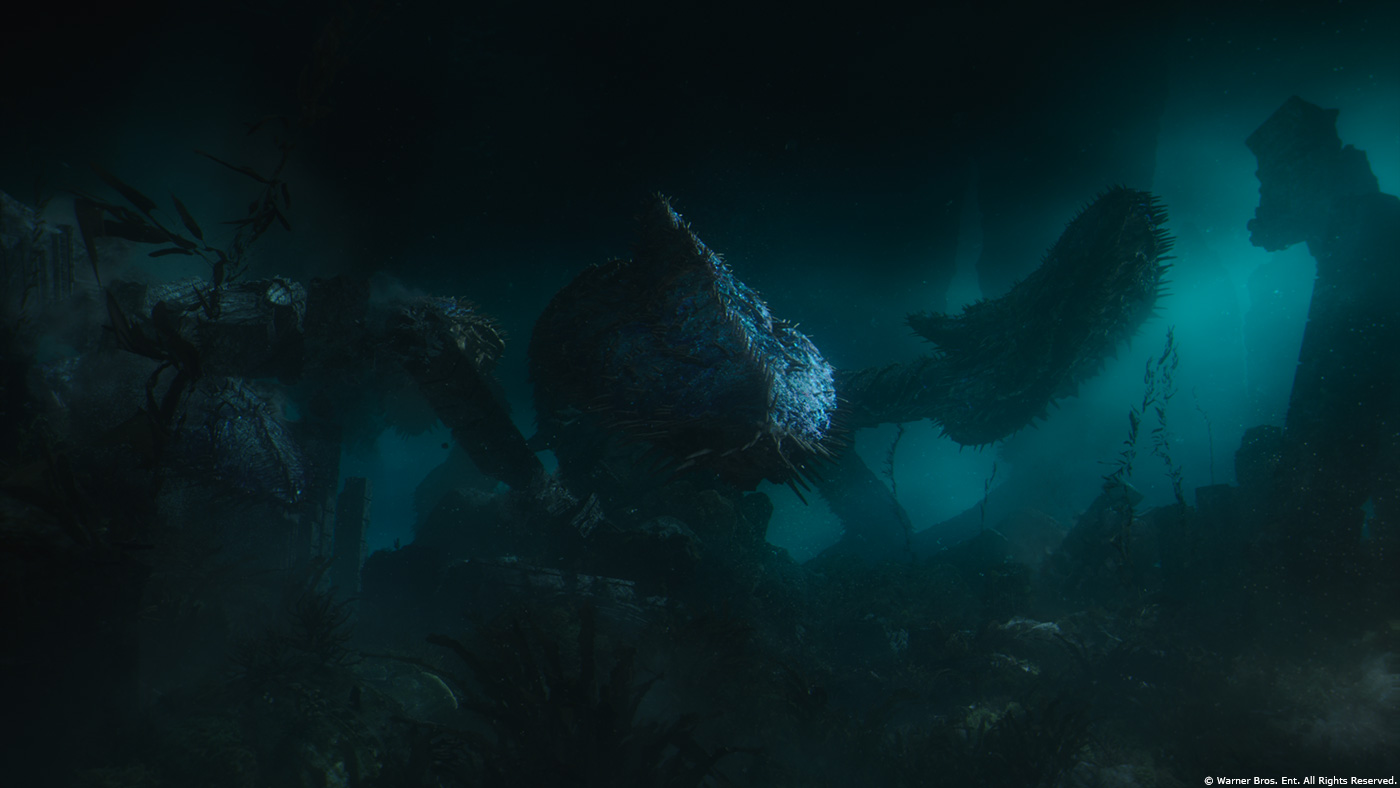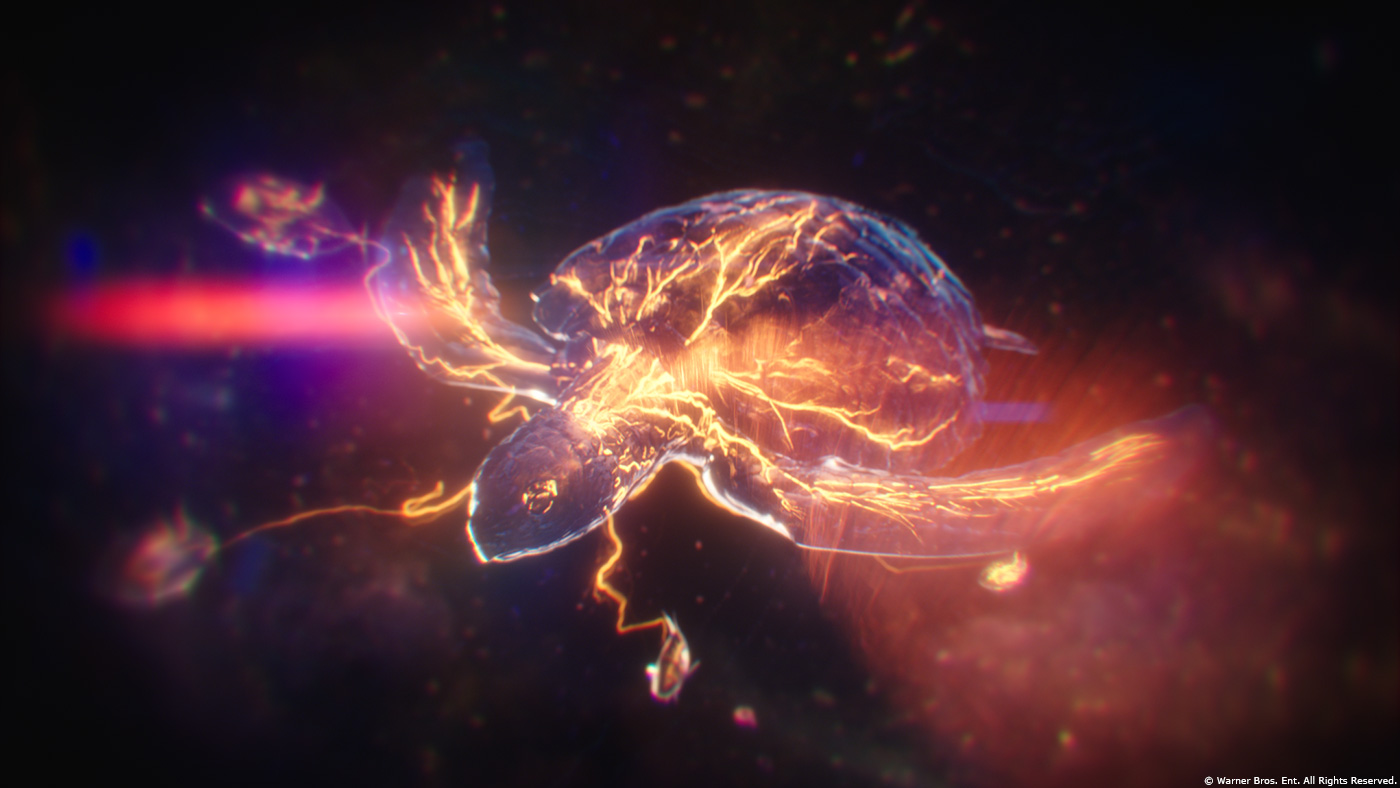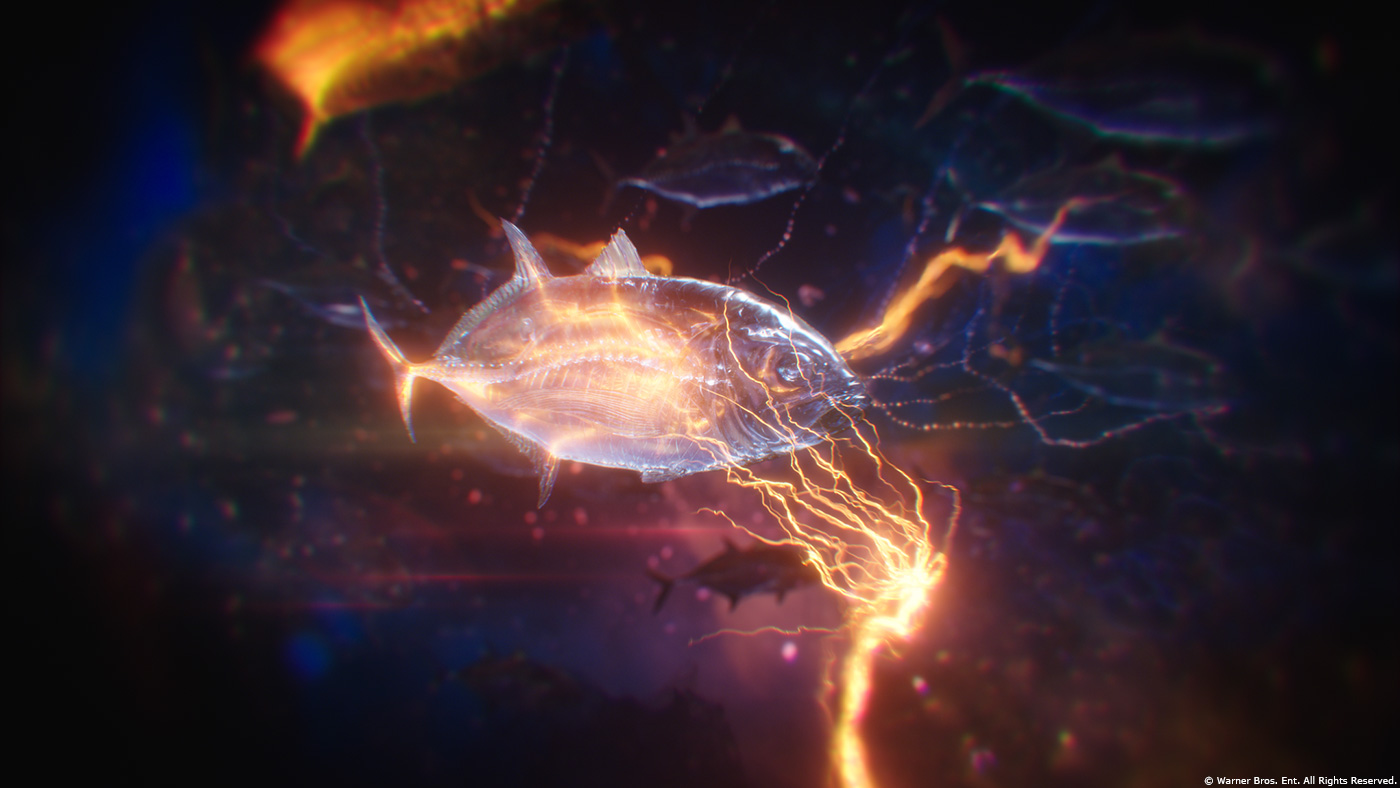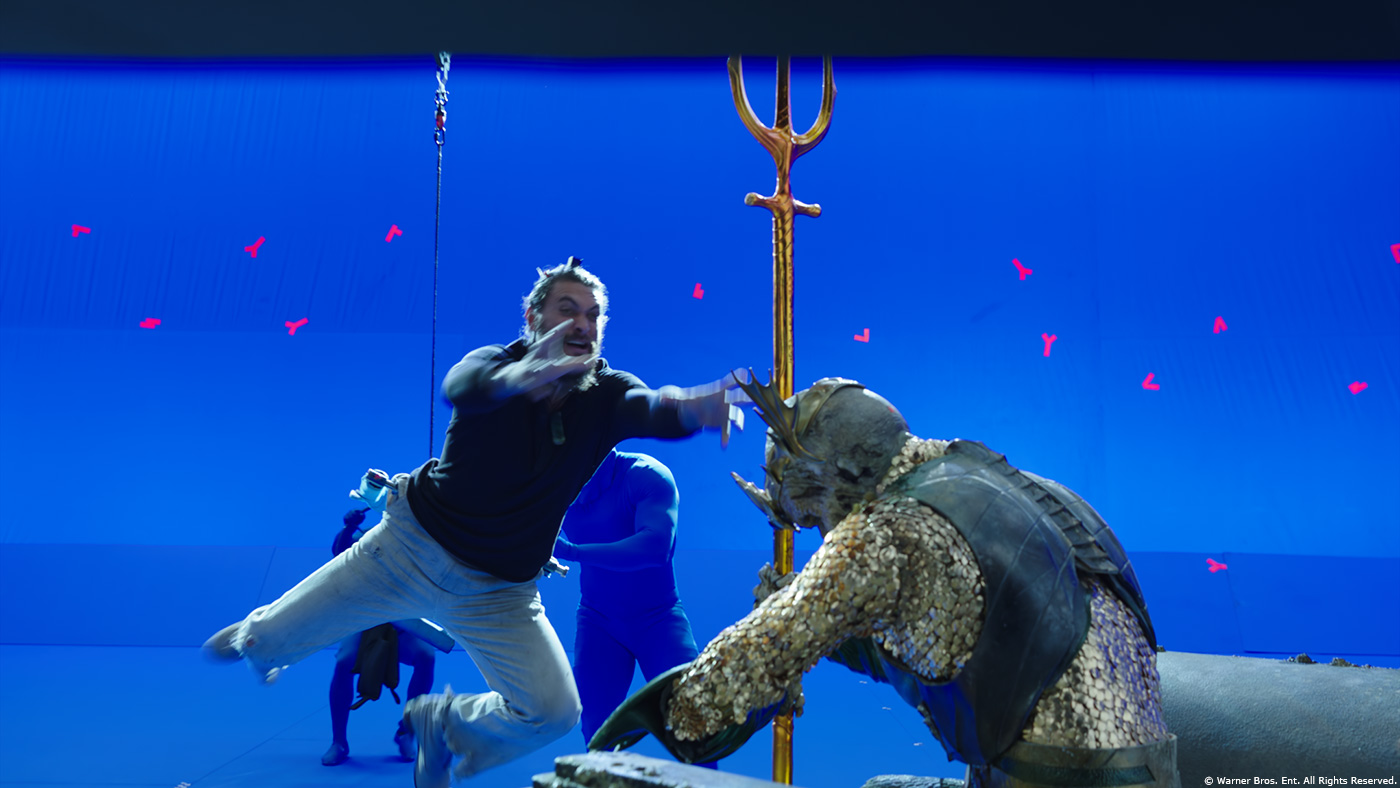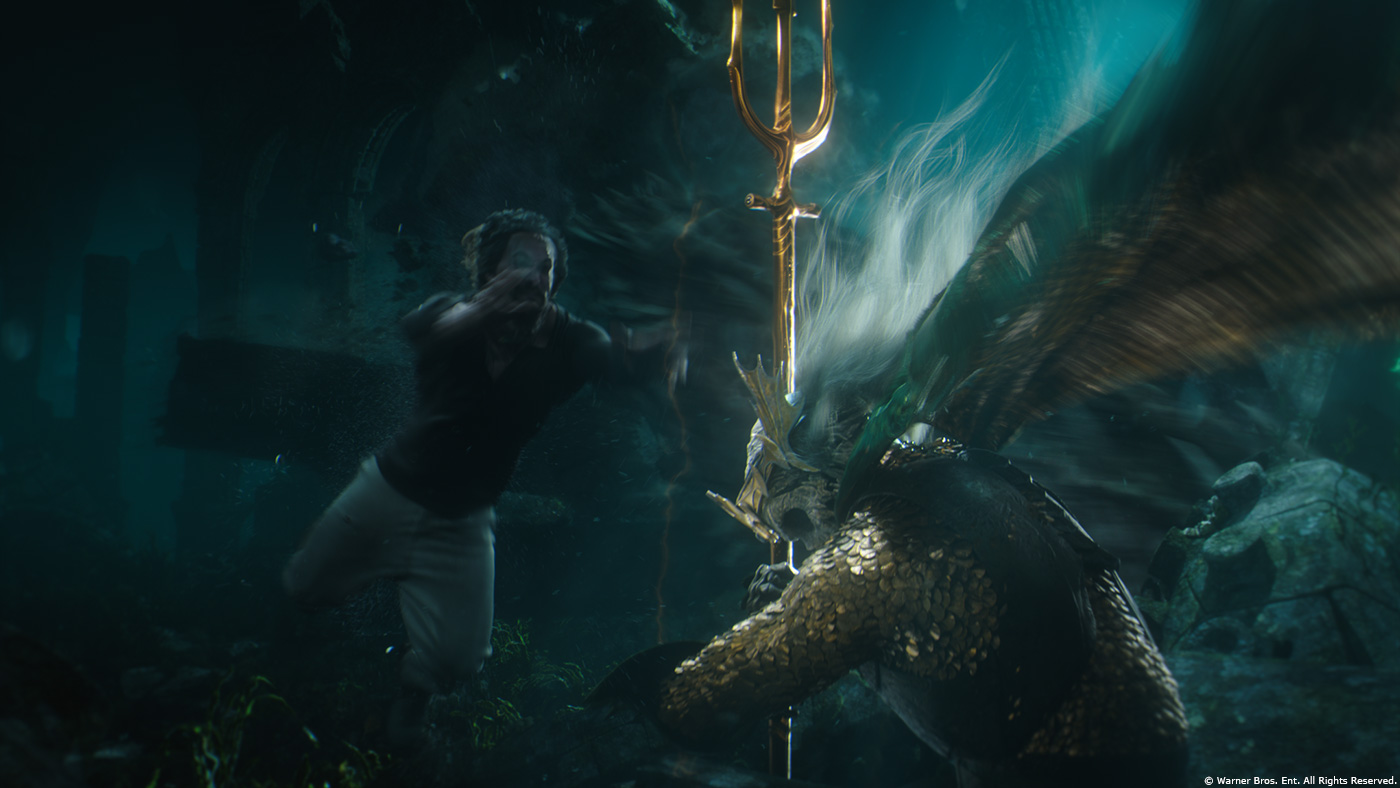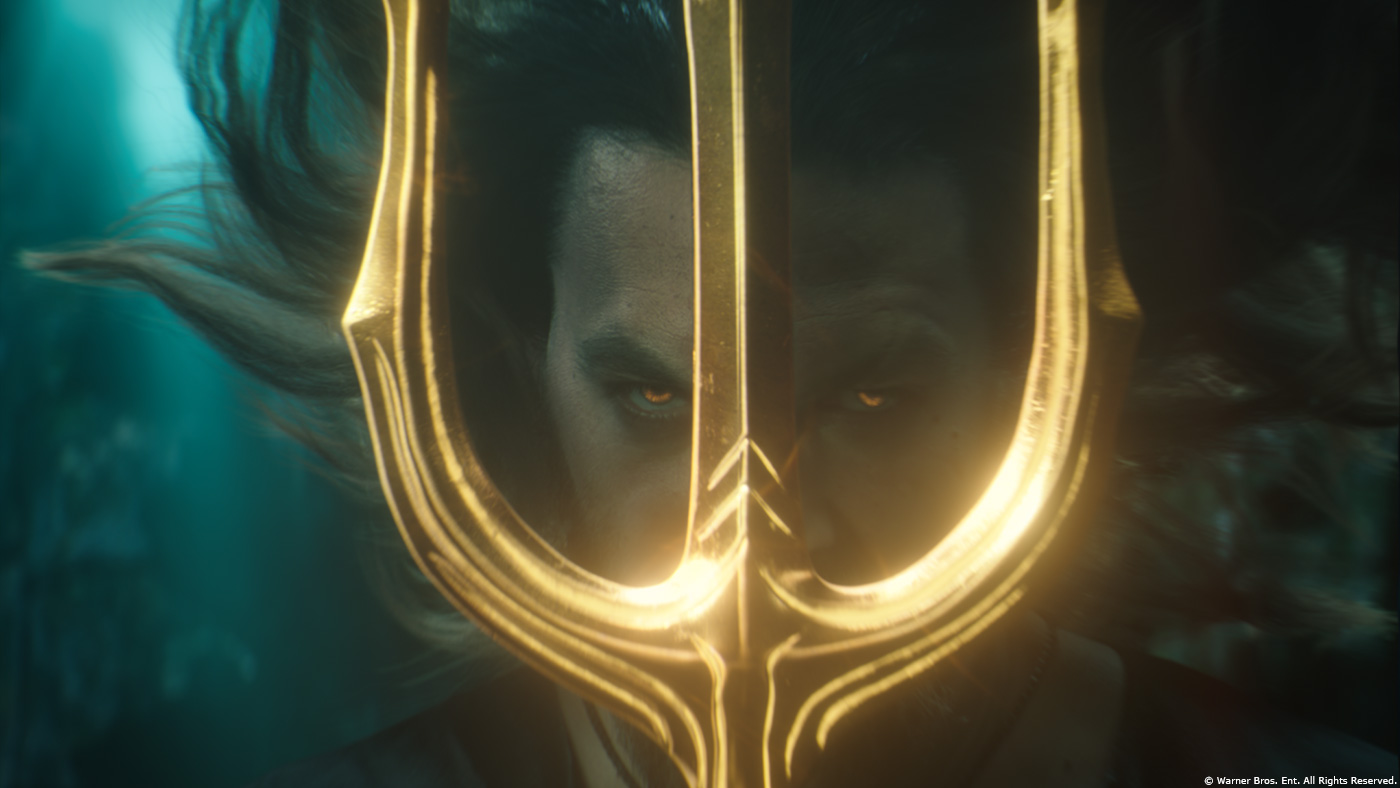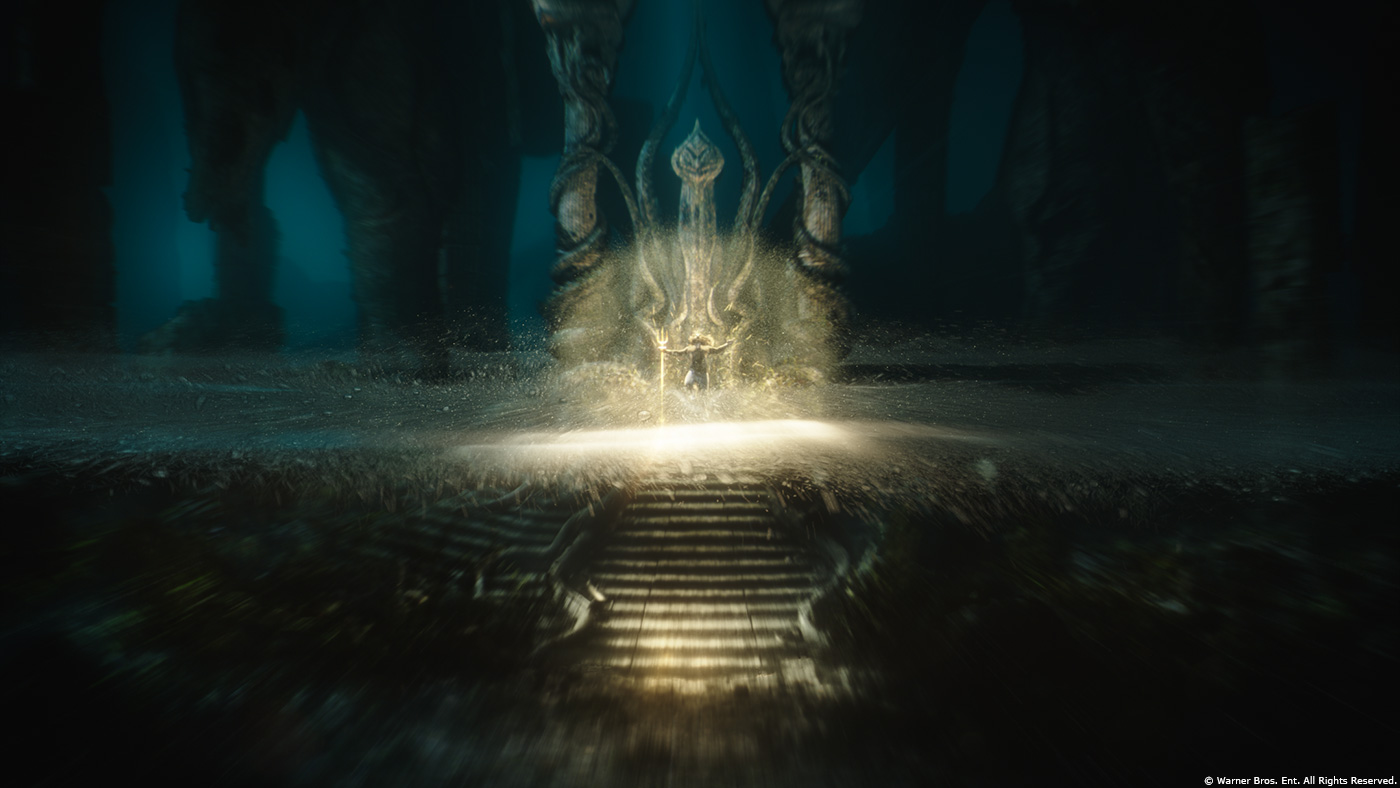With over 25 years of experience, Josh Simmonds has worked on many films such as AUSTRALIA, DON’T BE AFRAID OF THE DARK, HAPPY FEET TWO and MAD MAX: FURY ROAD. As a VFX supervisor, he took care of the effects of films like THE BOY, UNDERWORLD: BLOOD WARS, A-X-L and THE BALLAD OF BUSTER SCRUGGS.
Craig Wentworth started his career in visual effects in 1995. He has worked in many studios such as Weta Digital, Dreamworks Animation and Sony Pictures Imageworks before joining Method Studios in 2017. He has worked on many films like THE LORD OF THE RINGS: THE RETURN OF THE KING, WATCHMEN, EDGE OF TOMORROW and GUARDIANS OF THE GALAXY.
What is your background?
Josh: Strangely enough, my first exposure to computer graphics was via my mum in the late 1980s – she was a graphic design teacher who was studying a postgrad course on the subject, but software was pretty rudimentary. I studied industrial design in the early 90s and played with an early incarnation of Alias Studio and was hooked. I got 3D Studio (DOS release 2) at home, worked on a personal showreel and landed my first job as a 3D generalist in 1993. I worked across both commercials and film for the next 20 years and took on VFX supervision about three years ago.
Craig: I’ve always been in visual effects, professionally speaking. At university in Australia, I was studied business then marketing and advertising, with a heavy bias toward film and television production. I just loved the practical side of filmmaking – writing, lighting, editing, directing, all of it fired me up creatively. During the course of my later studies, one of my tutors pointed me at a computer and said, “On that machine in the corner is a copy of something called ‘3D Studio.’ We don’t know what it does or how to use it, but if you want to play around with it on your own time, you can.”
I spent looooong nights in that room after hours learning that software and creating self-contained “movies” of my own. I walked out of university with 60 seconds of that work on VHS tape and into a job as a 3D generalist at what was then known as Photon Stockman on the Gold Coast. I was hired to work on THE NEW ADVENTURES OF FLIPPER. How’s that for a nautical connection? That was 24 years ago.
One attempt at a visual effects company of my own with some Aussie colleagues, a couple of LORD OF THE RINGS movies, a KING KONG, MEN IN BLACK, EDGE OF TOMORROW, two ALICE IN WONDERLAND, and a dozen years with Sony Pictures Imageworks later, here I am in Vancouver at Method Studios!
How did you get involved on this show?
Josh: I finished up work on THE BALLAD OF BUSTER SCRUGGS and was invited to help fellow Method VFX Supervisor David Nelson to deliver AQUAMAN, which had evolved into a bigger job.
Craig: The production came to Method a fun, self-contained sequence in addition to Method’s work on the seaside village sequence. I’d just finished THE NEW MUTANTS, so the timing worked out. I also had worked with Jim Berney, who was overseeing the sequence at Imageworks, so it was a great fit.
How was the collaboration with director James Wan and VFX Supervisor Kelvin McIlwain?
Josh: David and I dealt directly with Kelvin – David had already spent some months working on the project and had also done a splinter element shoot and LIDAR work in Sicily with Kelvin, something that I regret missing out on! Our calls with Kelvin were a couple of times a week; the time difference meant that we’d speak at the start of our day and at the end of his. Given how big the show was, Kelvin was amazingly enthusiastic and cheerful – even towards the end of the production! Kelvin has a great eye, and as an ex-matte painter himself, he could give us very concise feedback on what he wanted to see, and also had great insight into James Wan’s notes on our sequences.
Craig: I can’t express enough how much my team and I valued James’ and Kelvin’s trust and collaboration. We also felt like partners in something very special. We came to the show late in the grand scheme of things and contributed some 60-odd shots compared to the film’s 3,000. At the risk of using a bad water pun: we were a little fish in a big, big pond. But James and Kelvin never made us feel that way.
James is an enthusiastic visionary, and open to cool ideas in service of his story. He always encouraged us to go for it, go big or go home. And Kelvin is a class act. He mostly left us alone to execute James’ direction.
How did you organize the work with your VFX Producer?
Josh: Our production team is a very tight-knit group and are experts at herding VFX folks. David and I organized a split quite early on where I’d come on board for the clifftop sequence, and then we’d pinch hit for each other when departmental reviews started to overlap. We have multiple layers of production, from Ineke Majoor, our VFX Executive Producer who is very in touch with the day to day running of the job, through to production managers and departmental coordinators – who thankfully could steer us where we needed to be, while at the same time giving us plenty of flexibility in resourcing for shots.
Craig: Our plan was pretty clear from the get-go. The look of the Well of Souls needed to be defined first, and since our schedule was pretty tight, that meant starting in concept. Our concept team created a number of look studies – different levels of vegetation, different lighting conditions, different color palettes. We wanted James to have as many options to choose from as possible, but I also wanted to get inside James’ head a little bit. Never having worked with him before, I was really interested in discovering what appealed to him the most aesthetically. Concept is a great way of doing that, because variations on a theme are (relatively) easy to generate.
Once we landed on an image that everyone loved, it was then a matter of translating the look to 3D. Modelling of the environment had already begun while we were concepting because we’d agreed from the start that we weren’t going to stray too much from the geography Day for Nite had established in post-viz. Our FX team was, in parallel, developing the procedural systems we would need to cover our model in fine detail. All the while, we were ingesting Arthur’s digi-double (provided by ILM for his body and hair, and Scanline for his costume) the Karathen (from ILM), and prepping them for layout and animation.
We worked fast. We had to. I’m also a huge proponent of pushing things as far through the pipeline as you can as early as you can; I used to be a lighter and compositor and really loathed not having enough time to work with elements and polish a final shot. There’s so much time to be saved by getting things into context as soon as you can. It helps you to hone in on the details that really matter in a shot, rather than noodle every pixel to death. My producer supported me as much as she was able in that goal, and I’m very grateful to her for that.
The village battle is a massive sequence. How did you work with the stunt and SFX teams?
Josh: There was an extensive previs stage prior to the shoot. This was referenced very closely with some of the crazy stunts and SFX that were executed on set. We did a lot of work blending different takes, as well as picking up stunt work and replacing with digi-doubles where needed. In many cases, we had to intercut between practical SFX and our own VFX explosions and debris work.
Can you explain in detail about the village and environment creation?
Josh: One of our biggest challenges on AQUAMAN was the scale and detail of our environment work. Using LIDAR scans in conjunction with extensive photography and photogrammetry, we combined a landscape location by the sea (Scopello, Sicily), a cliffside village location (Erice, Sicily) and the practical set pieces to reach the desired layout and level of detail for the sequence. This concept work was all achieved in 3D – without 2D artwork – using a modular approach to the design and layout. We also modelled hundreds of unique assets; from houses, trees and geological formations, down to individual set dressing, such as planter boxes, window details and street furniture. Most plate shots required extensive set augmentation, but we also had a number of full CG shots in the sequence as well.
To facilitate the sheer amount of data to generate the village fight scenes, we leveraged the open-source USD toolset with a number of our own proprietary tools. Being able to work in a complex yet highly interactive layout scene, make quick adjustments using the best of both Maya and Houdini and have a render ready scene generated was a huge efficiency boost, which enabled creative changes to be turned around quickly. Our render scenes were written directly from USD to V-Ray’s vrscene format, an approach that reduces the requirement for a DCC app as part of the render workflow and allows for very streamlined iteration.
How did you design and create Black Manta and his soldiers?
Josh: The art department had already done extensive work designing Black Manta and the Atlantean soldiers’ suits, although we did need to augment them quite a bit. James Wan decided that Black Manta’s head looked a bit too large, so we replaced his head in the majority of shots. We also executed a number of full CG shots of Black Manta and the Atlantean soldiers where the stunt wire work didn’t have quite the right feel.
In addition, we had a couple of shots involving the soldiers’ face plates, which were described to us as “solid water” – these had to have an internal complexity with a digital HUD quality, but when the face plates were impacted, the “seal” on the solid water fell into liquid. We went through quite a long process developing this effect!
How did you handle the lighting challenge with their armors?
Josh: We did extensive shader work on the various armor – the Atlantean soldiers had a complex metallic car-paint quality that was challenging to match. Thankfully, there was a lot of great reference material, along with calibrated HDRIs, grey and mirror balls so we could use our standard lighting pipeline.
During the two chases, the camera is flying all over the place. How did you film those kinds of shots?
Josh: James Wan has a unique way of filming action, where he likes to tell the story of both Arthur and Mera in parallel. They’re both involved in their own fights but in quite separate locations with limited set-pieces, so it was up to us to bridge this divide with full CG environments, blending the cameras with a CG camera.
Can you explain in detail about your work on this sequence?
Josh: We knew in advance the various key action locations, so in many ways we built the village to accommodate this. Our layout department occasionally had to move buildings, set pieces – even mountains – to achieve some shots, but in most cases, things lined up pretty well and were only adjusted for aesthetic or compositional reasons. Quite early on, we also had to isolate which building and set pieces needed to be destructible (turns out, quite a lot!) and model them according to the needs of our FX artists. USD again was a huge help in laying out these shots as described above, as well as being able to break out certain sections for key FX work.
The sequence ends with Mera using her power inside a wine shop. How did you create the various FX elements and simulations?
Josh: This was one of our more ambitious FX shots, where Mera uses her powers of hydro-kinesis to transform the contents of a wine store into a weapon to attack the Atlantean soldiers. A crucial problem in the shot was managing the volume of liquid going into the spears. In actuality, more wine was packed into their volume than could have fit in a non-divergent solution. By dynamically updating the Houdini FLIP particles to have negative divergence towards the front of the spears, fluid could continually flow in without having the delicate spear tips overflow into unruly blobs.
At the head of the shot, around 40 million particles were flung into the air. Over the next 120 frames, they needed to gracefully spiral into the provided template of animated spears. After much experimentation, the final setup involved the FLIP particles being attracted to a polygonal surface of skinned helical curves built from template spear geometry.
Due to memory overhead and a massive amount of particles, the FLIP particles were meshed in six separate sections. Each section was clipped in a Clip SOP at precise borders in axis-aligned match move space, producing negligible seams at render time. FLIP points falling outside of the smoothed surface VDB SDF were rendered as tiny spheres alongside the secondary spray particle pass.
How did you create the beautiful time lapse shot of King Atlan on his throne?
Craig: That was a fun one! When we sat with James in LA to first discuss this shot, he happened to make a throwaway comment along the lines of, “I wish I’d shot that in reverse.” The original plate for the shot was a push in, and in hindsight, he wished he’d filmed a pull out to better show the passage of time. We said, “Well, why don’t we? It’s an all-CG environment, we have a King Atlan digi-double, we can take Graham McTavish’s face and performance from the original plate and create a CG camera move… Let’s go for it!” So that was stage one: reversing the entire shot while preserving the actor’s original performance, which we rotomated.
We were tasked then with the challenge of showing 1,000 years passing in a 208-frame shot. If you do the math, that’s roughly five years going by every frame, which meant every frame would need to look dramatically different. James wanted something that looked like wild time-lapse photography, and together we settled on something a little more stylized that than, where not every element in frame aged at the same speed.
Starting with the environment we created for the Well of Souls, which was built essentially in a destroyed state, we modelled an undamaged version. We laid out and simulated its 1,000-year destruction in Houdini from there. We did this in “real-time” (as much as you can in 200 frames), but in order to convey a more time-lapse-like feel, we then held these simulations on twos, threes, fours and so on, all while the camera pulled smoothly back in photographic real-time. It created a very complex a staccato layering of sims. Also in Houdini, the FX team simulated dust and debris, the growth and death of plant-life, along with sand volumes accumulating around the throne over a thousand years. All of this was again rendered to look like stop-motion but at random frame rates. When Atlan slams the Trident on the ground and the time lapse effect kicks in, our tech anim team simulated his hair and cape fluttering all over the place on every single frame to convey the considerable passage of time.
The lighting team rendered several lighting setups with the key light sources positioned in a number of different world positions to allow the comp team to create a randomized disco light show. I kept telling them the more it looked like a rock concert, the more successful the lighting would be. This was consistent with James’ direction of wanting absolute chaos throughout the shot. It all came together in the comp, itself set up to randomize the layers and lighting conditions created by upstream departments as much as possible. You might not even notice, but at the very end of the shot, everything settles down to real-time again.
How were the underwater shots of Jason Momoa filmed?
Craig: Jason was filmed in a “tuning fork” stunt rig on a bluescreen stage. He, James and a talented stunt team dressed in blue extensively rehearsed and choreographed his movements to convey a sense of underwater movement. Of course, the rig itself needed to be removed to create the final shots, and often this meant replacing Jason’s body with a digital version. But the work of the stunt team greatly influenced our final digital animation.
Can you explain in detail about your work on his hair?
Craig: I don’t think I’m out of place in saying that Jason’s hair was as much an actor in the movie as Jason himself. It was very closely scrutinized. I also want to say that our tech anim team at Method absolutely killed it in terms of hair sims. Using Maya and XGen, our team created very natural sims. Our shots involved a fight – a messy fight in which Jason is getting tossed around – and James gave us the freedom and encouragement to just go for it with the hair simulations. There were times when I was worried that we were getting too wild or crazy, but James kept wanting us to go further. He didn’t mind if hair got in Jason’s eyes when he was being slammed into a wall or tossed down the throne stairs. In fact, the messier the hair looked, the happier he was, because the more natural it felt. We mostly let the simulations do their natural thing, with very few aesthetic constraints. We iterated a lot on the hair, though. Its performance and realism was really important to James, and I’m happy that at a certain point our tech anim team’s work became the high-water mark for the show in terms of hair simulation, and something for other facilities to follow.
How did you create the huge environment of the Well of Souls?
Craig: When we came on, the fight between Aquaman and the Karathen had been blocked out quite extensively by the post-viz team at Day for Nite. It didn’t make sense to reinvent the wheel so we began with their basic model and then went to town with detail. We modeled a large number of library construction pieces – columns, massive statues, arches, rocks of all shapes and sizes, shells, bones and more – and then built dozens of damaged instances of these in order to create a complex and dilapidated environment. Using a Houdini procedural system, we covered the environment in detritus. Cora, kelp, barnacles, any sign of life – or death, really – that would show thousands of years had passed in this place were scatted over our model. There were millions of instances on this thing.
Lookdev was mostly procedural, starting in Substance Designer and moving to Mari for texture work, then making its way to Mantra in Houdini for rendering. We deep-composited everything in Nuke, and largely drove the look for the final shots in compositing with a large number of depth, position and matte passes provide to the comp team but their lighting colleagues. Add to details like moving plants, particulates, turbulence and dust in the water, and I’d argue this entire movie was one of the most consistently complex compositing challenges in VFX history. My hat is off to everyone involved, not just at Method.
How did you manage the underwater lighting challenge?
Craig: A really interesting thing happened when we got into the lighting of the sequence. As we were working in layout with James and Kelvin, it turned out that James really fell in love with the very simple, yet graphic look we were getting from our layout renders. There was a very strong sense of contrast in these “playblasts,” something James described as akin to the work of Mike Mignola (the artist behind ‘Hellboy’), and he really wanted us to go for that look.
With his background in horror, James gravitated toward something that was mysterious, graphic and yet peaceful, all at the same time. He wanted to give the audience a chance to just breathe for a little bit, the film having run at breakneck pace up until the moment Jason faces off against the Karathen, so our goal was to create an environment that actually felt very calm at first. In the end, we went with something quite film noir: classic three-quarter, back-lit aesthetic with strong shadows, something I remember fondly from my film stud days. It didn’t matter necessarily what direction we were looking, there was always just one main source of back-lighting, with subtle fills accenting features of the environment that would help the audience understand the geography of the battle zone as the fight quickly took place. We had a great team of lighters who were very patient with us as we found our look, and I cannot thank them enough for their skill. And the compositing crew worked tirelessly to add great visual depth to every frame.
How did you design and create the Karathen?
Craig: The Karathen was an asset we were provided by ILM, though at the time we started, the final design was not 100-percent complete. With time against us, we matched their lookdev as best we could and just started rendering her. As her design and look evolved, we tweaked our model, textures and shaders for final shots. As is always the case with an inherited asset, we modified it and rigged it to work with our animation and rendering tools. Our riggers did a great job providing the animation team with the flexibility they needed to convey complex emotion in, essentially, a couple of tentacles. Remember, we never see the Karathen’s face in our sequence, and yet the creature is having one of the most important conversations in the movie with Arthur. Those tentacles had to be very expressive. The tech anim team added even more performance subtlety with their skin simulation atop the animation team’s work.
How does her massive size impacts your animation and texture work?
Craig: One of the most complicated aspects of the creature in animation terms was striking the right balance of speed and heft. The Karathen, as described to us, is one mile long. That is absolutely massive, bigger than anything we have seen on screen in creature terms, and something that large, especially underwater, just wouldn’t be able to move that fast. But James wanted it to treat Arthur like an insignificant little bug – like flicking an ant off your table top. Often I would look at the animation team’s work and ask them to run it at 18 – as in, slow things don just a little bit to make the creature feel heavier and really emphasize its enormity. Using a temp dialogue track, our animation team made sure that the tentacle’s’ movement felt motivated by her engagement with Arthur. There’s a point in the sequence where he says “screw you!” and her reaction to those words, for me, is one of the most significant moments in the movie. It’s then you know he has her respect and is about to become all he can be. As for texturing, we definitely needed to add detail to ILM’s asset. Our tentacles were shown in mid- to close-up shots so an extra level of detail was required in texturing to ensure she stood up to such scrutiny.
What kind of references and indications did you receive for the long shot inside Arthur’s mind?
Craig: We really only had the post-viz team’s work to draw from initially. It conveyed that the shot intended to take us on a journey across not just the vastness of the ocean but also in scale, from microscopic ocean life to the massive Karathen herself. Design and concept are real Method strengths so we came up with our own take. When my producer and I met with James for the first time in LA, we had concept images he hadn’t yet seen that represented our vision for this journey through Arthur’s “mind’s eye.” It was cosmic and beautiful. We proposed following the fibers of Arthur’s golden iris through an oceanic “space.” It was our first pass and everyone flipped for the idea.
Can you explain in detail about the creation of this shot?
Craig: The shot is actually three parts: an A-side plate pushing into Arthur’s eye (filmed live action), the part B of the flying through his mind, and part C, which was originally also live action, but was turned into CG for a more dynamic camera move. The A and C parts were relatively simple by comparison to part B. For that, we needed to lay out a frenetic journey that clearly conveyed how interconnected all species are in the ocean. That was the most important thing of all.
A very talented generalist at Method basically pieced this journey together himself. He modeled, textured and lookdev’d most of the assets that were used (with the exception of the Trench from Scanline and the Karathen), and choreographed the camera move. Speed and energy were key in this, and James and his editor had a lot of input with regards to timing. Meanwhile, one FX artist worked on all the ‘spacey’ stuff in Houdini. He first developed a system for the golden fibers we chase through 3D space, animating them so that as one creature of focus was touched, additional threads would shoot out and connect with all the other creatures around it. Then there were nebulous cloud volumes and geometric “spider-webs” spread around the landscape to create something that felt like it could have been in outer space, but also felt like a continuous journey. We didn’t want to just jump from one scale or place to another; it really needed to feel like we were travelling across a massive landscape.
Those two artists also handled the lighting and rendering of part B in Mantra, while other lighters and FX artists handle parts A and C. In the end, four compositors worked on the shot simultaneously to bring all three pieces together, working on seamless transitions, from an extreme close-up of Arthur’s eye into his mind and then out again through his other eye as he channels the power of the Trident.
What was the main challenge on the show and how did you achieve it?
Josh: Probably the sheer scale of the locations, and blending the shot plates with our CG environment. And all of the destruction FX. Camera work. And the character animation. Scene management, lighting, composites… it was all pretty challenging!
Craig: Because of its sheer complexity, the journey through Arthur’s mind’s eye was a big challenge, but an even bigger task was Arthur’s hair. There was a lot of attention and focus on the hair and for good reason, because it had to look authentic. I’m really proud of the work our tech anim team did on that.
Which sequence or shot was the most complicated to create and why?
Josh: Probably the single shot that sums up the experience best is one of our long “oner” shots, where Mera is running along the rooftop while being chased a floor below by Murk (a key Atlantean soldier). Murk is crashing through walls followed by the camera, which then flies out the window and picks up Mera on the roof, who in turn is being fired upon by more soldiers. It was a huge feat of choreography, involving both practical and CG FX, lots of stunt work, digi-doubles and face replacement, as well as stitching multiple takes to blend it all together. Add that into our huge CG environment, so at the end of the shot, the camera can race back across the rooftops to pick up on Arthur in battle with Black Manta. It was exhausting enough to just describe it!
Craig: Right as Arthur is about to grab the Trident, the Karathen swats him down the stairs. Arthur smacks into the throne, tumbles toward the camera and comes to an abrupt halt right in our face. This shot was originally meant to be two shots, but as we worked through layout with James, we saw an opportunity to combine them. It was an ambitions digi-double takeover, because the switch from CG to real Jason was happening right in front of the viewer. Fortunately, we had all of his luscious hair flying around to help hide what we were doing!
Is there something specific that gives you some really short nights?
Josh: At one point in the film, Mera fights a trio of Atlantean soldiers while the camera orbits multiple times around the fight arena. Whilst the choreography to pull off this kind of stunt work was fantastic, there was a requirement to stitch two separate takes together; this would have been fairly trivial if the backgrounds matched, but unfortunately there was about a 20-degree discrepancy in the direction of the camera. Using complex camera re-projections, as well as a lot of photoreal environment work and further digi-doubles – as well as a whole lot of roto and comp trickery – we blended from one plate through to two seconds of CGI takeover, then into the second plate, all the while maintaining a constant barrage of destruction and weapon FX. It’s one of those shots that doesn’t look that difficult when you see the end result, but pretty satisfying to get it out the door.
Craig: These days it’s my 16-month old son, but to be honest, I don’t really lose sleep over VFX anymore. I’ve been doing this for far too long to allow it to keep me up at night. The excitement of the next day or next challenge though, that’s what gets me up early in the morning. Every day in VFX is a new problem that needs to be solved, and that is very cool.
What is your favorite shot or sequence?
Josh: The “wine spears” shot for sure. Mera is badass!
Craig: One of my favorite moments in AQUAMAN is the scene with Arthur and Mera fighting and escaping the Trench. That scene is right in James’ horror wheelhouse and you can tell. It’s beautiful and scary at the same time. A very big tip of the hat to Scanline for their work on that.
One of my favorite VFX shots of all time is one you wouldn’t know was VFX unless someone told you; in MAVERICK (yes, I’m that old), Mel Gibson tosses a playing card in slow motion directly at the camera to win the final poker game. There is no way you would know that card was CG but it is – and that is where VFX is at its best, when you just don’t know we’re playing tricks on you.
What is your best memory on this show?
Josh: As always, being surrounded by the talented folks here at Method who, even under pressure, know how to crack a joke and make it look easy when I know it’s not!
Craig: Sitting side-by-side with James for two hours, talking through our scope of work and cracking jokes about the game of cricket that no one else in the room understood. But seriously, the entire project was a blast. Even the long nights at the end were worth it. I’m really proud of what the Method team contributed to this movie and I’m very happy for everyone involved with the production that it’s become a billion-dollar success.
How long have you worked on this show?
Josh: I personally worked for about four months on the show, though it was in production here for around a year, ramping up about six months in.
Craig: About four months.
What’s the VFX shots count?
Josh: Around 300.
Craig: We ended up delivering a total of 55 shots.
What was the size of your team?
Josh: Around 100 people at the peak of the project.
Craig: We maxed out at 116 people.
What is your next project?
Josh: I’m already up and running on IT: CHAPTER TWO. Lots of fun stuff in this one!
Craig: I’m actually on two right now: THE LAUNDROMAT for Steven Soderbergh, with Robert Stadd as VFX Supervisor; and DOCTOR SLEEP, with Mike Flanagan directing and Marc Kolbe as VFX Supervisor.
What are the four movies that gave you passion for cinema?
Josh: THE ELEPHANT MAN and STORM BOY were two of my earliest film memories, and both gave me a sense of the power of film to move people. BLADE RUNNER and AKIRA set me on this path – and of course the STAR WARS trilogy, but that would make seven and it’s probably an easy assumption!
Craig: When I look back at my career, I think there are four seminal VFX movies that really drew me to this industry. The first is STAR WARS. How can you not be awed by that massive Star Destroyer flying over your head at the beginning of the film? The second is BLADE RUNNER, my personal favorite movie of all time. It is classic theater, highly underrated for its time, but also drawing upon a lot of the film noir detective movie tropes I studied in university. Then there are TERMINATOR 2 and JURASSIC PARK. These are two films that really defined what CGI could do for movies and changed everything – because now you could do anything! I watched JURASSIC PARK seven times in the theater and the work still stacks up today; it’s that technically good.
A big thanks for your time.
WANT TO KNOW MORE?
Method Studios: Dedicated page about AQUAMAN on Method Studios website.
© Vincent Frei – The Art of VFX – 2019


